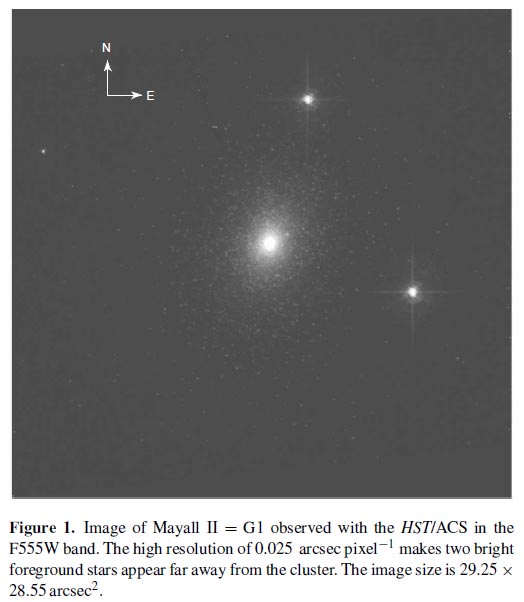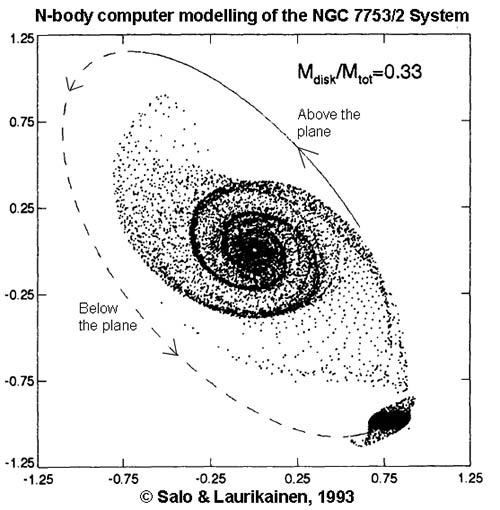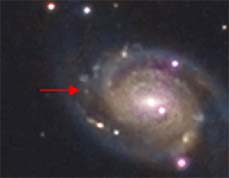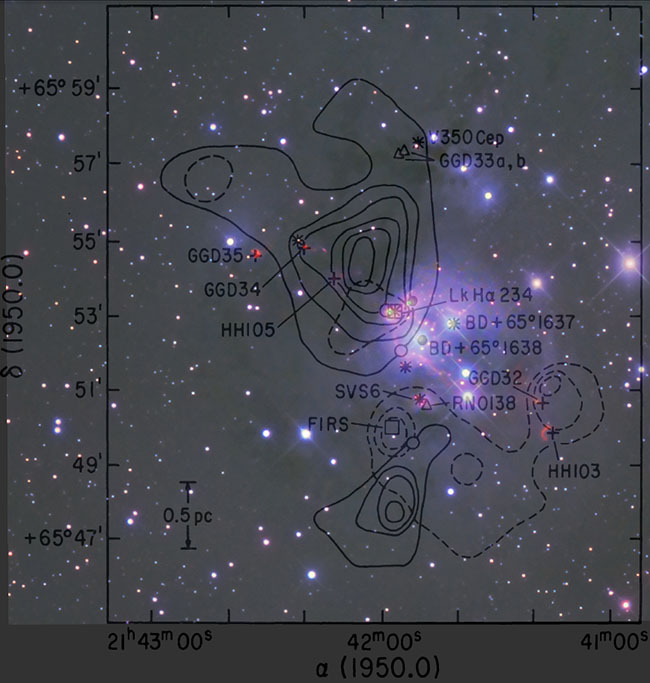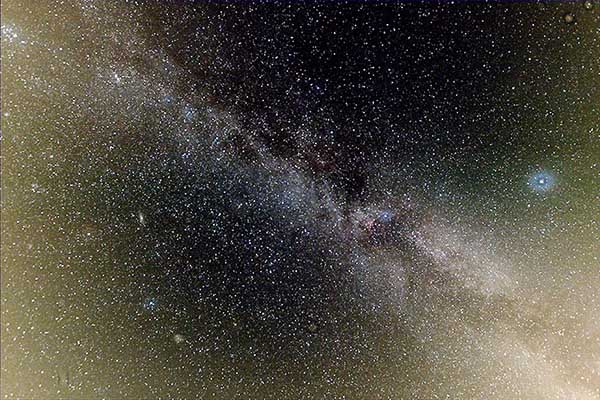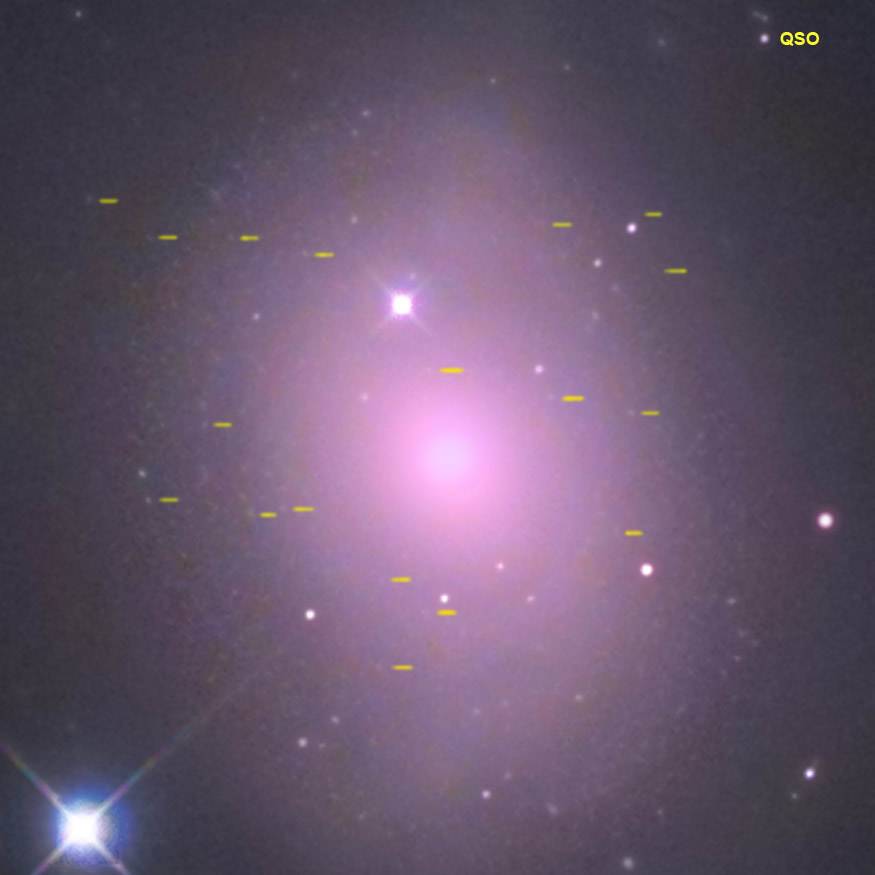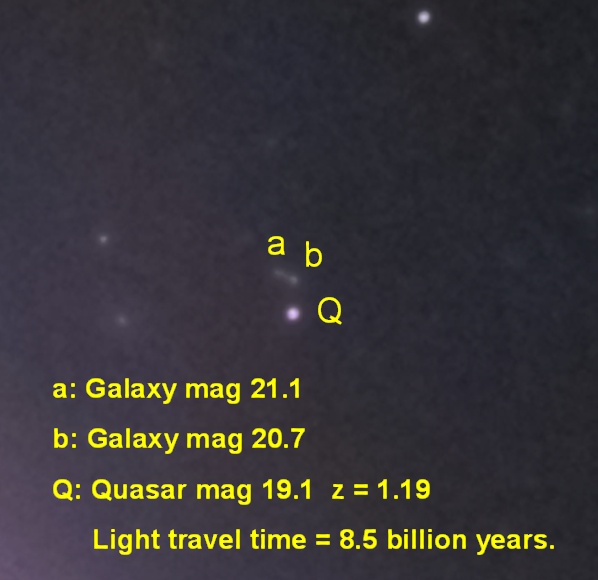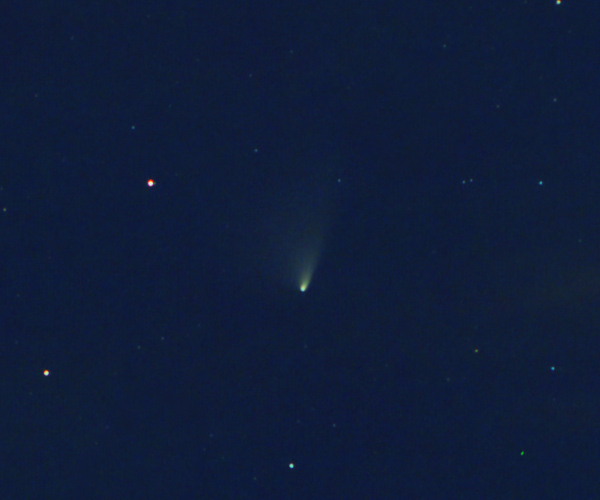ARCHIVE 2013INTRODUCTIONImaging from the worst place on Earth? Possibly! Welcome to my image blog from Lancashire, UK. Living in Lancashire does make imaging a challenge. Our incessant damp cloudy weather is legendary and coupled with light pollution probably as bright as can be found anywhere (I am 15 miles NW of the centre of Manchester) makes for testing times! Add to that flight path one with constant aeroplanes, which is why it has been suggested as possibly the worst place on Earth for imaging. Now the good news. With modern light pollution filters we can still produce excellent results - at least when the clouds clear - but of course we cannot match dark sites - I avoid looking at images from such sites as they are very depressing and un-representative of what the rest of us have to suffer! So if you too live in cloudy suburbia then I hope the following images offer some encouragement. I often shoot the luminance and the colour simultaneously - there are not enough clear spells to alow the luxury of shooting separately. Having two telescopes and two cameras is obviously essential for this - as is having a dome slot wide enough for both to have a clear line of sight. The luminance is usually taken with the RCOS + Apogee Alta and the colour Takahashi + Canon 40D. Despite their disparate focal lengths this works reasonably well as the Canon has 5 micron pixels (plate scale 2 arcsecs/pixel) and the Apogee 18 micron ones when binned 2x2 (plate scale 1.3 arcsecs/pixel). I find binning essential to maximise signal and improve the signal-to-noise ratio. The images are all taken from my back garden and appear in order of me processing them - we have plenty of cloudy nights for that. I use a combination of IRIS and Maxim for processing with final tweaks in Photoshop CS2. To get rid of the light pollution takes much trial and error. IRIS scores here with several options but processing often comprises many nights work - certainly always longer than the actual taking. The exception are images taken with an h-alpha filter which is a superb light pollution filter. It also permits imaging with strong Moonlight present - isn't it funny how it always seems to be clear at full Moon! |
DECEMBER 29th, 2013Galaxy NGC 7610 & Supernova SN2013fs |
|
Located just below the Square of Pegasus, this rather faint Scd type spiral galaxy is around 150 million light years distant. It was discovered by Andrew Ainslie Common. However, due to an error on his part this galaxy has 2 NGC numbers 7610 and 7616. The latter is almost certainly a second observation of 7610 and there is nothing at the coordinates he gave for 7616. Common discovered 30 NGC objects visually with his 36" f/5.9 reflector at Ealing, UK. Common's objects, which are all galaxies, were published in New Nebulae, (1882). The telescope mirror was made by George Calver and the telescope was erected in 1879, replacing the 18" reflector built in 1876. The "3 foot" as it was known, had a truss tube on a fork mount in a wooden observatory. In 1885, it was sold to Edward Crossley who built a new "iron" observatory for it at Bermerside House, Halifax, Yorkshire. Frustrated by the usual northern weather, he offered the observatory and telescope to the new Lick Observatory (Mt. Hamilton, USA). It was moved in 1893 and became operational in 1895 when it became known as the "Crossley Reflector". Supernova SN2013fs was discovered by Koichi Itagaki (Japan) on 6th October 2013. This is a Type IIP (was IIn) (z=0.012). I would estimate it was around magnitude 16 to 17 on my image - using the raw image as the image here is non-linearly stretched. Image Details
|
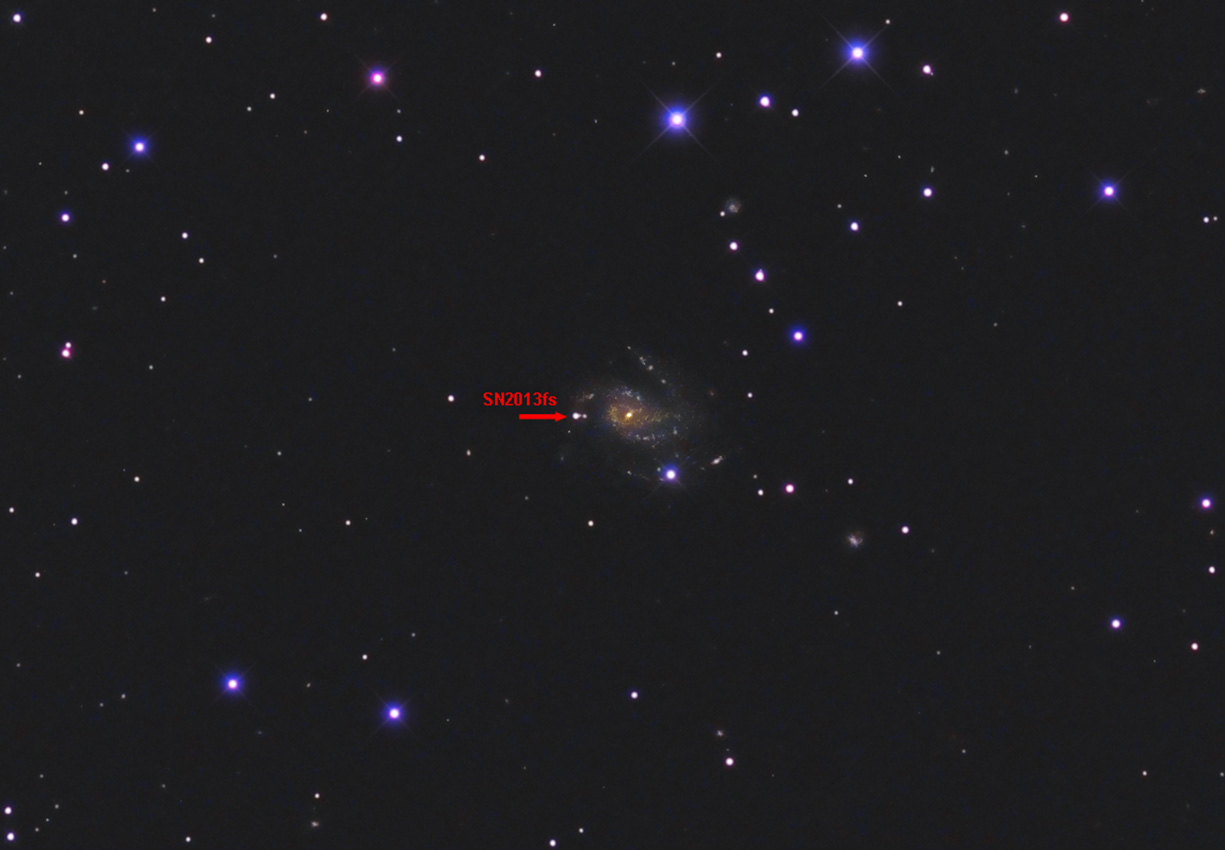 |
| NGC 7610 |
DECEMBER 22nd, 2013Andromeda Galaxy Globular Clusters G1 & G2 |
|
G1 is the most luminous globular cluster in the Local Group and probably the most massive at 4 to 7 million M⊙ (Barmby et al. 2007; Ma et al. 2009). It is noticeably elliptical but this is common for the largest globular clusters. A comparison with a variety of simple stellar population (SSP) models yields a mean age which is consistent with G1 being among the oldest building blocks of M31 and having formed within ~1.7 billion years after the Big Bang (Ma et al., 2009). Ma et al also found that G1 has similar properties to ω Centauri, M54 and NGC 2419 - large globular clusters belonging to our galaxy. All three of these objects have been claimed to be the stripped cores of now defunct dwarf galaxies so is G1 perhaps the core of a stripped dwarf galaxy? Ma et al. considered this in detail whether GCs, nucleated dSph cores and normal dwarf galaxies form a continuous type or if GCs and dSphs constitute distinct classes of objects. They presented arguments in favour of this latter option ie they are separate objects. The jury is probably still out though! Kong et al., 2010 investigated the premise that G1 has a black hole at its centre. Based on Keck and Hubble Space Telescope (HST) observations, it has been claimed that G1 hosts a ∼ 2 × 104 M⊙ object at the core (Gebhardt, Rich & Ho 2002, 2005) - in other words an intermediate size black hole (IMBH). However, the suggestion of an IMBH is controversial and has been challenged by Baumgardt et al. (2003). Recently, X-ray emission near the core of G1 has been discovered based on XMM–Newton observations (Trudolyubov & Priedhorsky 2004; Pooley & Rappaport 2006; Kong 2007) and it is suggested that the X-rays come from Bondi accretion from cluster gas on to a central IMBH. Kong et al seemed to conclude that it is not proven that G1 does have a black hole at its centre. Globular Cluster G2 = Mayal III and magnitude 15.8V. Galaxy North-East of G2 is UGC330 (PGC2026). It is of type S0 at a distance of around 260 mly - obviously a background object. Image Details
|
Hubble Image: Ma et al., 2007. Note their N and E directions are both in error. North is 45 degrees out and East is 135 degrees out. That's professionals for you! |
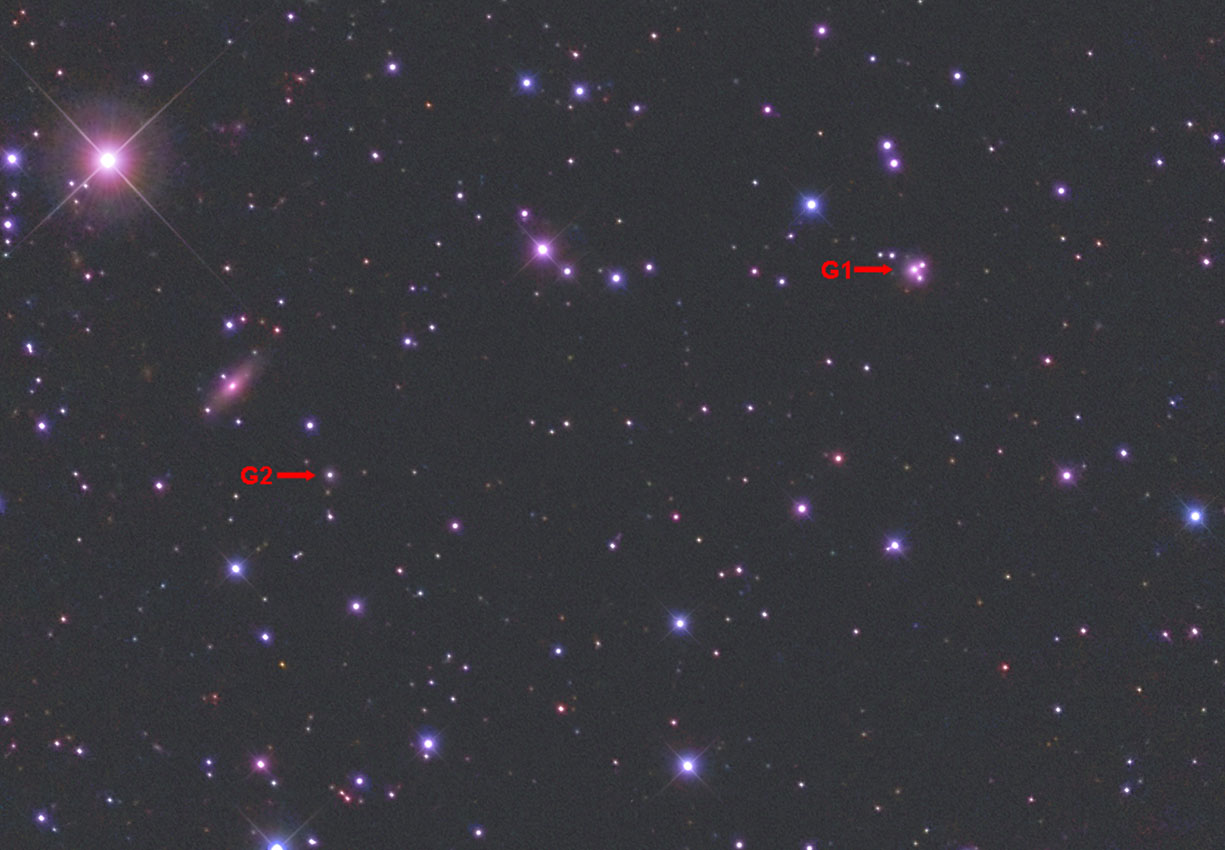 |
| Globular Clusters G1 & G2 |
DECEMBER 15th, 2013Emission Nebulae Sharpless Sh2-168 & Sh2-169 |
|
Close to Beta Cassiopeia, this pair of emission nebulae are rather ignored with few images and data available. Only Avedisova's " A Catalog of Star-Forming Regions in the Galaxy (2002)" has some information. Sh2-168 is the brighter and Sh2-169 very faint. Sh2-168: Avedisova catalogues Sh 2-168 as being ionised by the O9 V star LS I +60 50. Avedisova locates Sh 2-168 in the star formation region SFR 115.80-1.60 along with the radio source KR 84 and in the general direction of the expanding shell surrounding Cassiopeia association OB5. The nebula includes the loose infrared cluster [BDS2003] 47 and the Herbig-Haro object GM 2-44. Sh2-169: A very faint nebulosity just south-east of Sh2-168. Avedisova catalogues it as being ionised by the B0 III giant BD +59 2786. The Sharpless Catalogue places this nebula in the "faintest" category.
Image Details
|
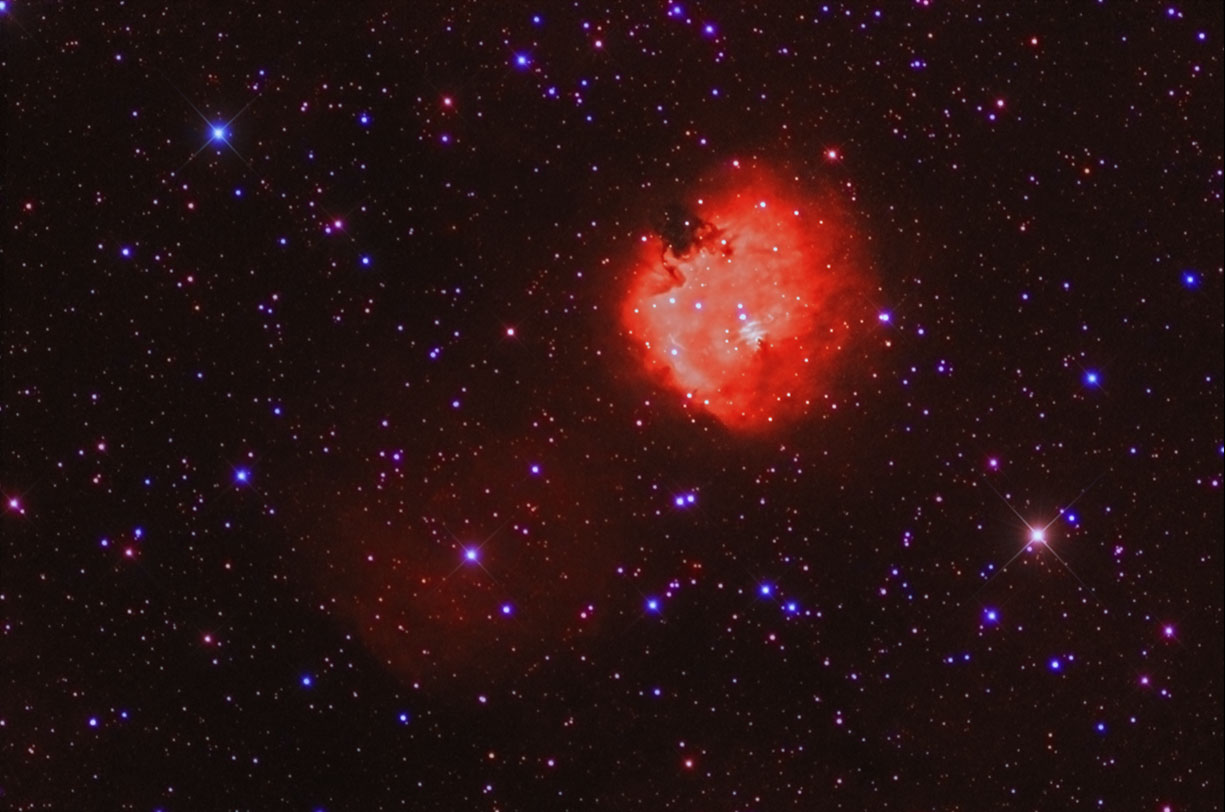 |
| Sharpless Sh2-168 & 169 |
DECEMBER 8th, 2013The Eye of the Dragon (Sh2-190, IC 1805) |
|
The Dragon's Head is just part of the large emission nebula popularly called the Heart Nebula. Often referred to erroneously as IC 1805 but the latter is actually just the open star cluster at the centre of the Nebula (see right). The nebula is more accurately described as Sharpless Sh2-190. This in turn is part of the even larger Cas OB6 association and a giant "superbubble" is being blown northwards and out of galactic plane from this region. Radio sources within the nebula, associated with intense star formation (known as W3 & W4), have enabled the distance to the nebula to be determined as 6500 light years. With very strong moonlight (93% full) targets were somewhat limited so I settled on an object that I had imaged before but this time I wanted it to take centre stage. Image Details
|
Location of the Dragon's Head in the Heart Nebula |
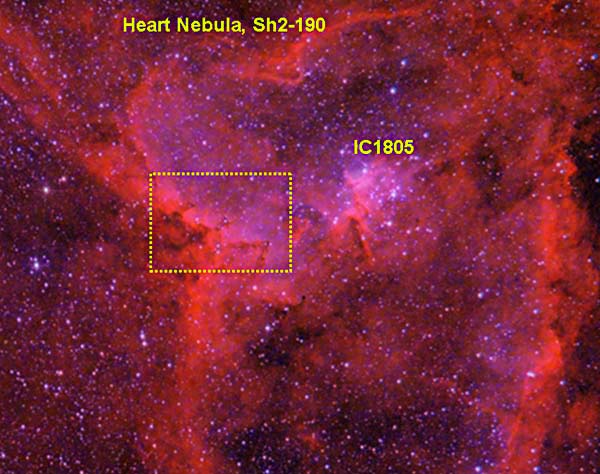 |
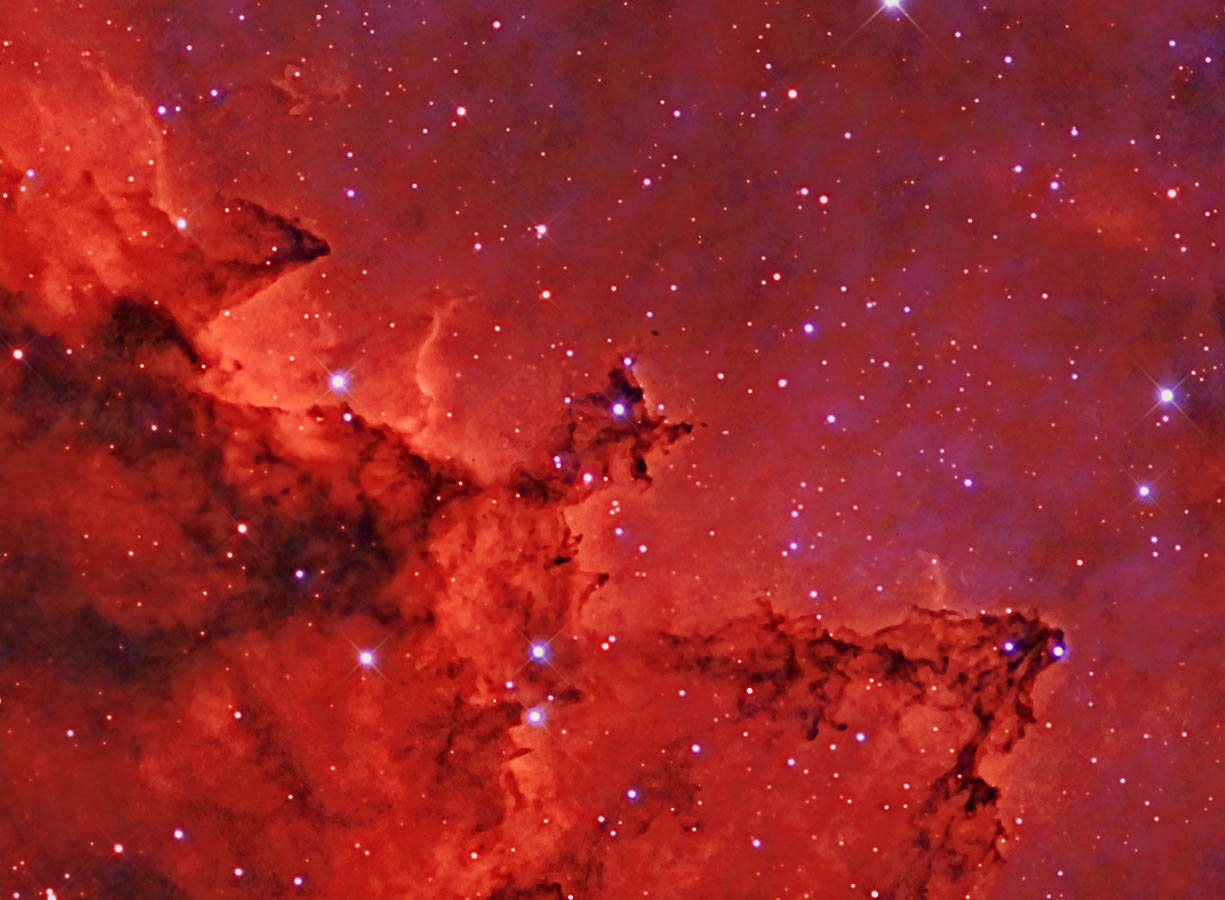 |
| The Dragon's Head in IC1805 |
DECEMBER 1st, 2013Interacting Galaxies NGC 7753/7752 (Arp 86)
|
|||||||||||||||||||||
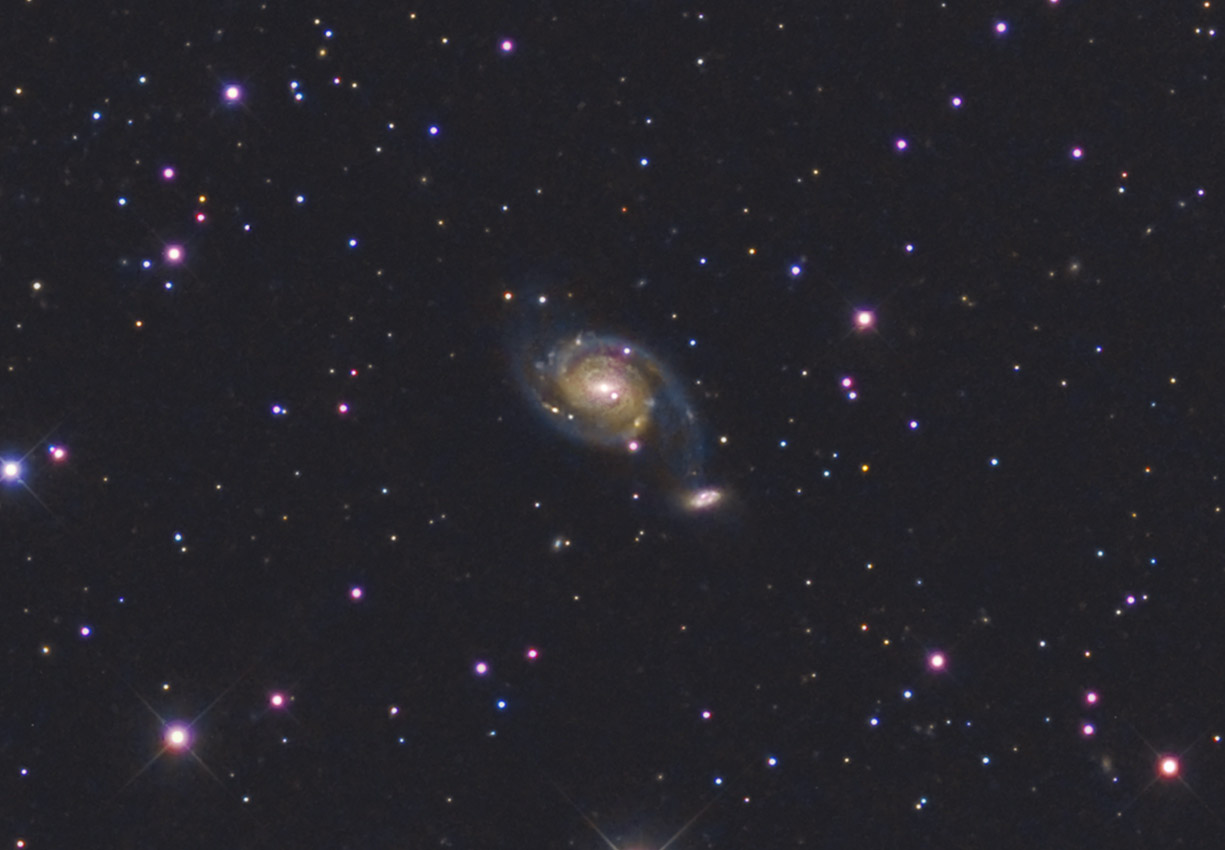 |
|||||||||||||||||||||
NGC 7753 |
NOVEMBER 17th, 2013The Other Ring Nebula, Abell 80 Located in Lacerta this seldom imaged planetary nebula bears a striking resemblance to M57. Very little published information for this object. Appears to about 3000 light years distant. The central star is listed as magnitude 19.6 so the illuminating star is not the brightest one in the centre - it's not the right colour so I already I had my suspicions - they are normally very blue. I assume it must be the one above and left a bit of the brightest central star? Image details:
|
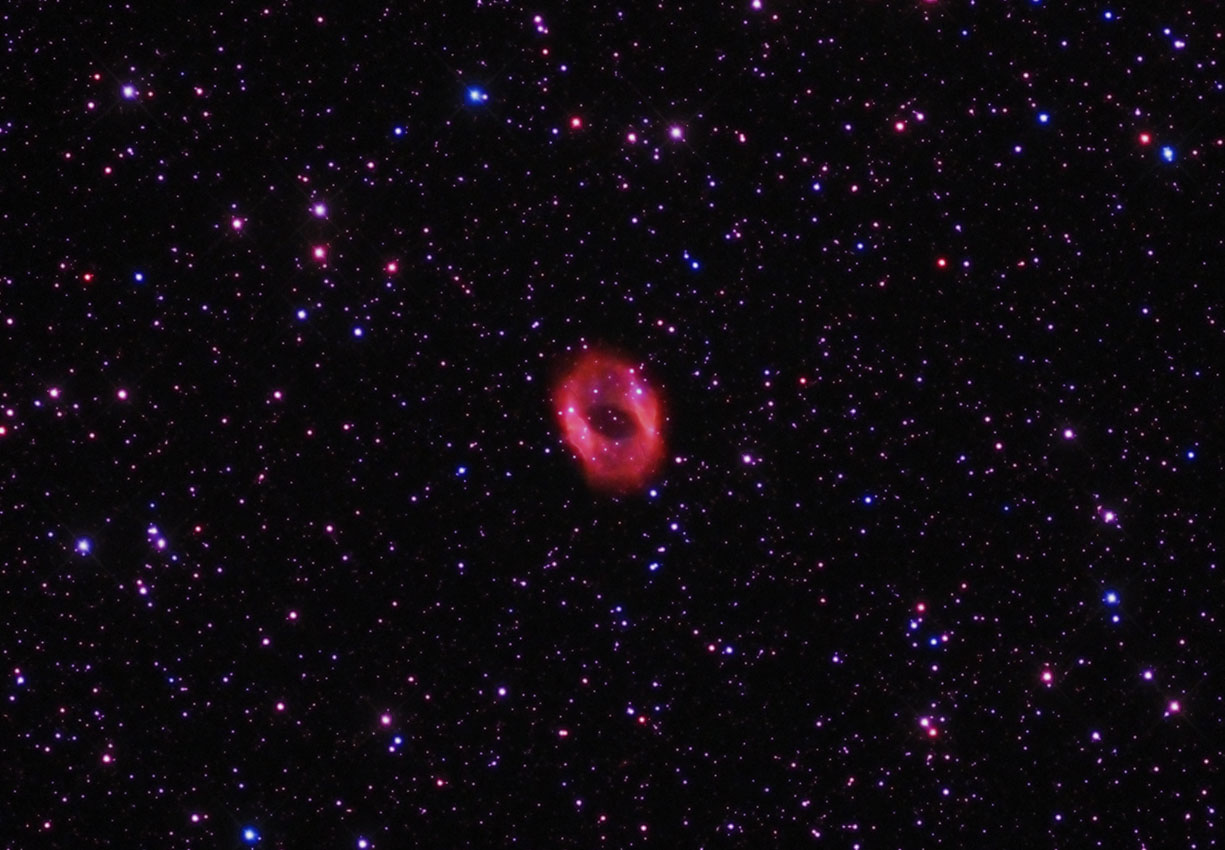 |
Abell 80 |
NOVEMBER 3rd, 2013Reflection Nebula NGC 7129 in Cepheus
|
|||
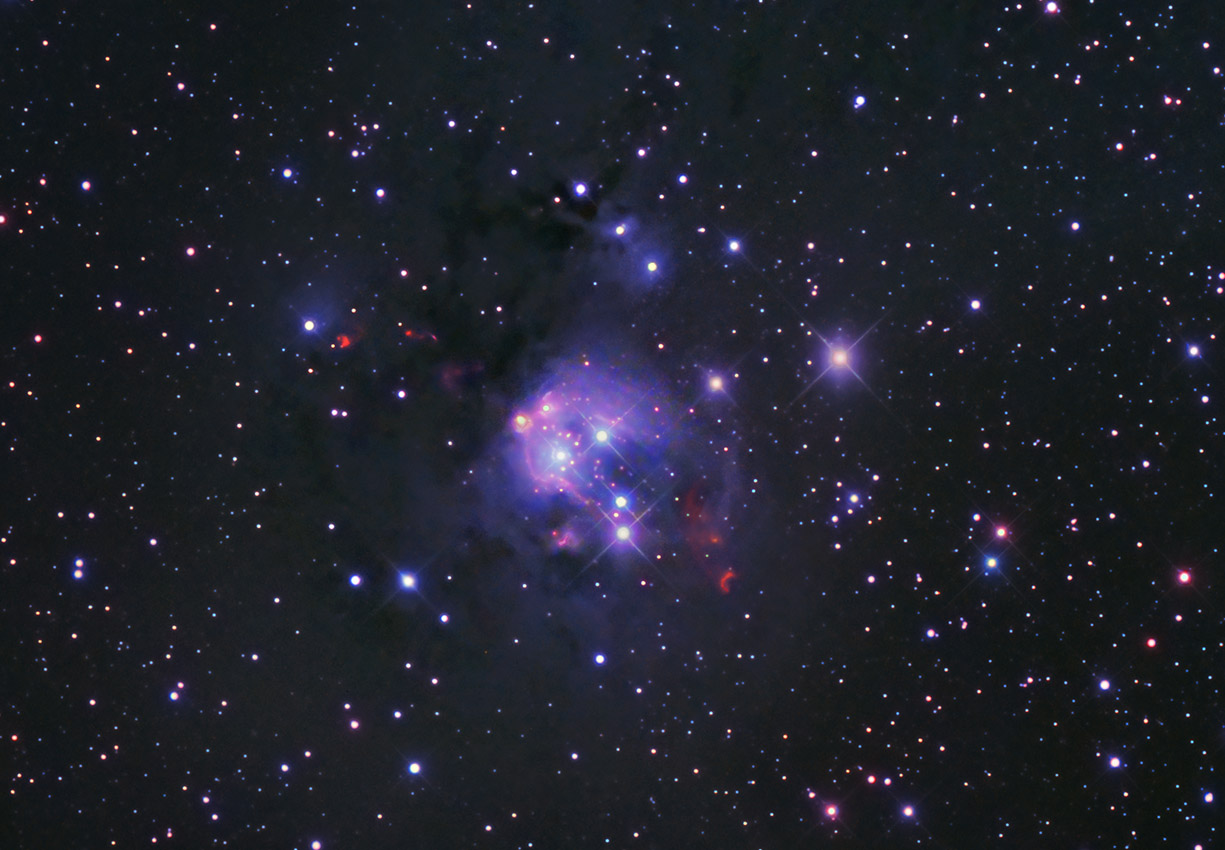 |
|||
NGC 7129 |
OCTOBER 20th, 2013The Milky Way at the Kelling Heath Star Party
|
||
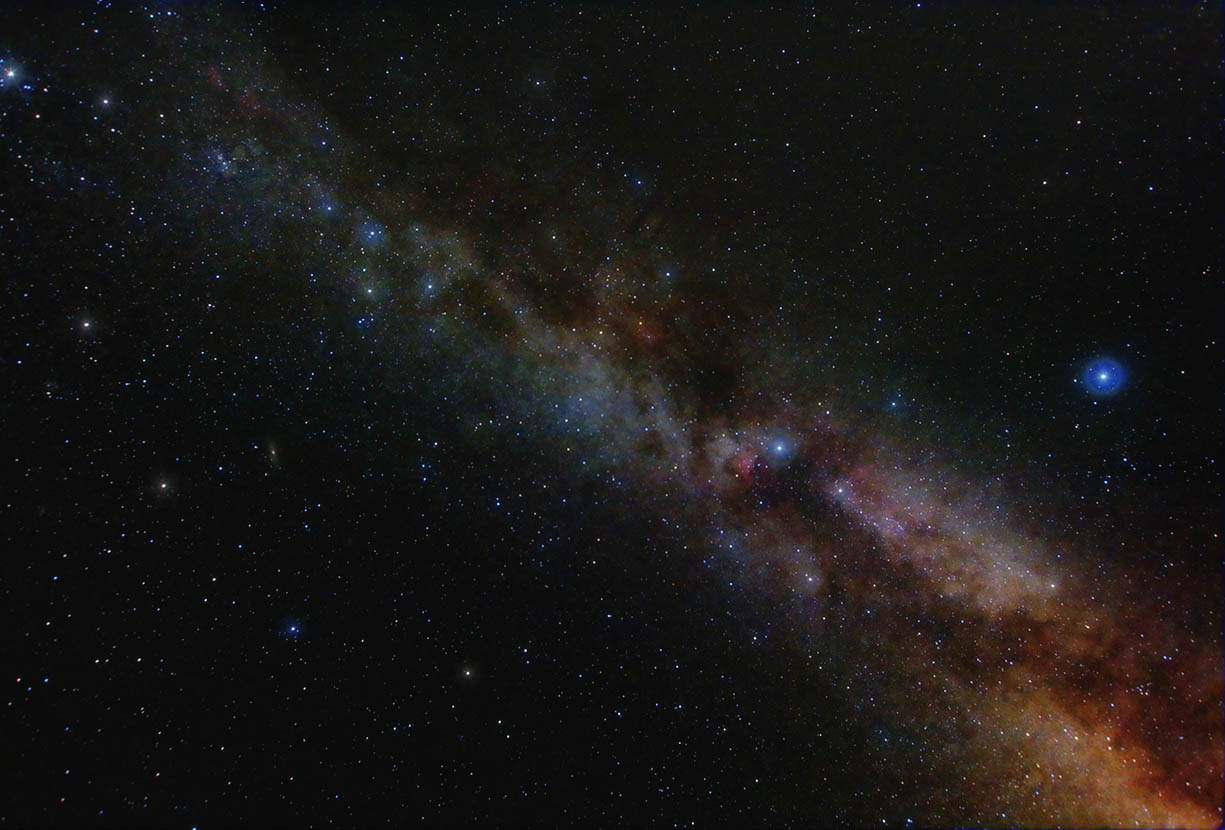 |
||
The Milky Way over Kelling Heath |
OCTOBER 13th, 2013Emission Nebula Sharpless Sh2-112 (Detailed view) My first image of the autumn with the 12.5 inch RCOS - focused with the Bahtinov mask - see below. The previous widefield image provided the RGB colour for this image. The images were shot simultaneously, which maximises the few clear nights we have. I was going to caption this one as a "close-up" but of course it is no closer just more detailed. For description of the object - see the widefield shot below. Image details:
|
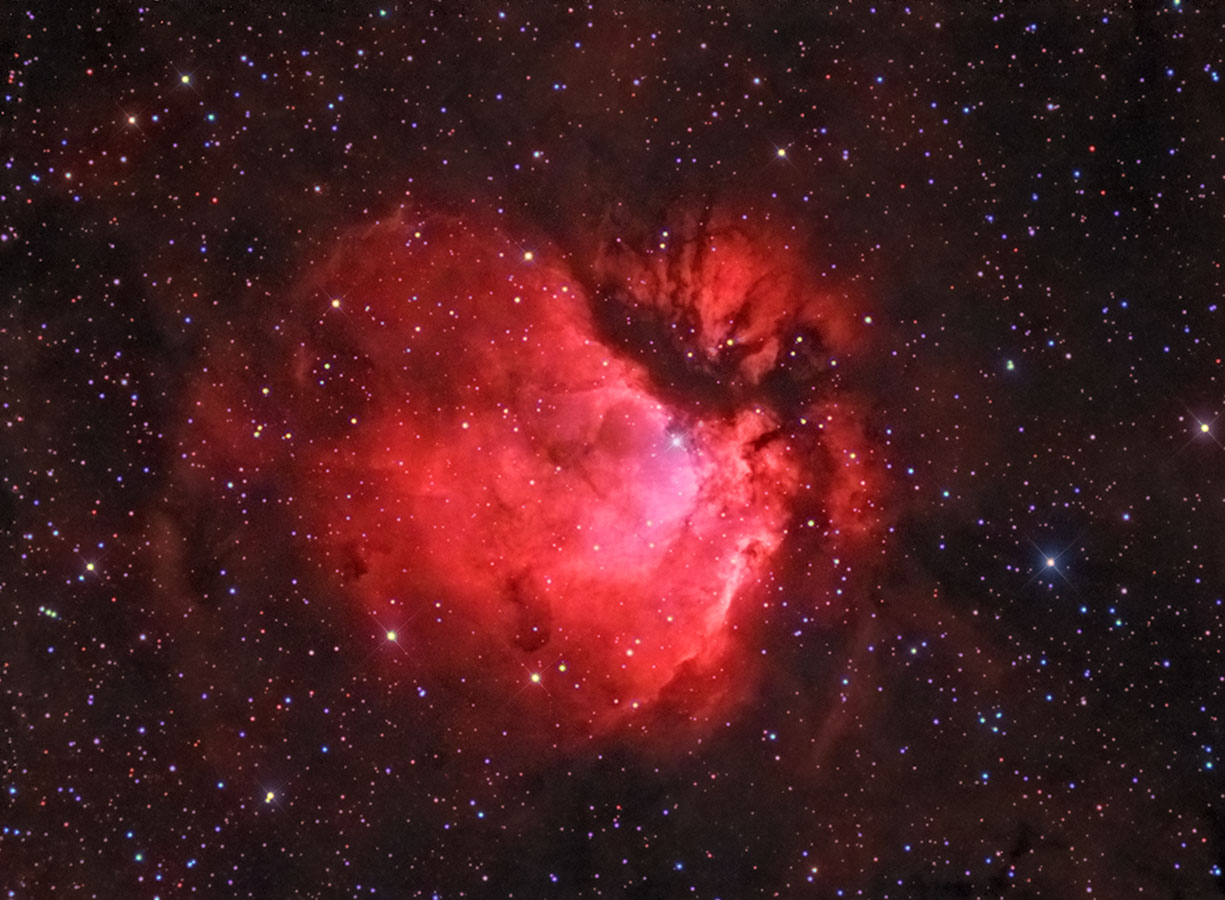 |
Sharpless Sh2-112 |
SEPTEMBER 29, 2013Turn Right at Deneb: Emission Nebula Sh2-112 (Widefield) This wide-field image was taken to provide the colour for a detailed H-alpha image taken with the RCOS. However, the surrounding area turned out to far from empty and virtually covered in faint nebula plus several dark nebulae so I decided it was well worth processing in its own right. Sh2-112 refers to just the central bright nebula located just over 1 degree west of Deneb in Cygnus. It is an HII emission region of apparent size of about 15 ' crossed by a prominent dark band. It is believed that the star responsible for ionising the nebula is not Deneb but the blue double star (class O8V) near its center. It has an apparent magnitude of 9.6 and is known as BD +45 3216 or WDS A740. Estimates for the distance of this star provide a value of about 5670 light years, which would place Sh2-112 in the region of the Orion Arm. Ref: Wiki
|
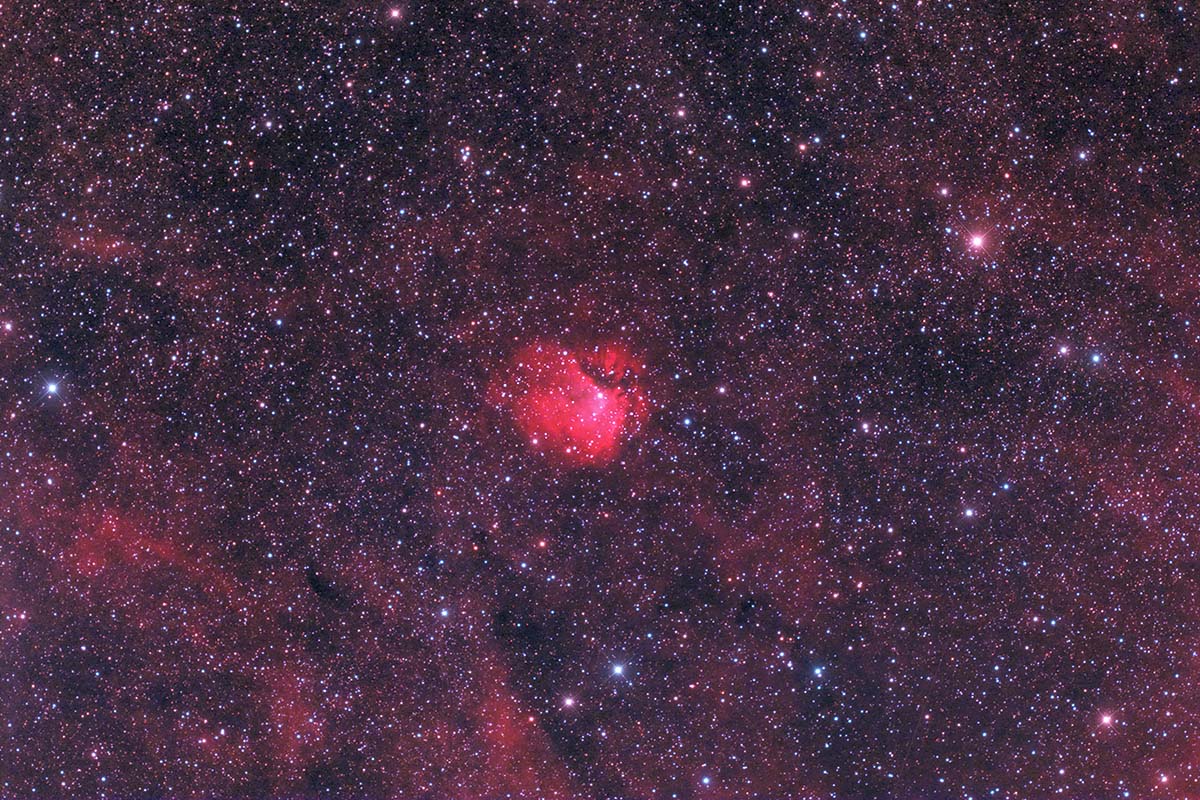 |
Sh2-112 |
SEPTEMBER 22nd, 2013Bahtinov Mask on the RCOS
I have always used visual focusing for the RCOS (12.5 inch R-C Telescope) based on the sharpness of the diffraction spikes and the length of the bloom (bleeding) on a magnitude 1 star. However, with an H-alpha filter in place this meant exposures of 30 seconds or so as this filter really reduces star brightness. I decided over the summer to try a Bahtinov mask and a bespoke one was ordered from StarSharp (Morris Engraving). The first one received was undersize but this was replaced by a correctly sized one without hassle. It was time to try it out. The RCOS has a secondary focuser that moves in steps of 1/40,000 inch. With the old method I would focus in steps of 10 units ~ (1/4,000 inch) and could usually get focus to plus or minus this amount. So what does the Bahtinov mask produce? The two images are what I got with 5 second exposures on Deneb. So 6 times faster than my 30 second exposures to start with. Hopefully you can see the subtle difference 10 units has made - the left is a focus count of 35 and the right image a count of 25. The right one is obviously the correct position as the centre-line of dots bisect the cross of the outer lines of dots. A secondary movement of 1/4000th inch equates to a 1/1422th inch shift for the focal plane. So the Bahtinov mask can focus the RCOS to better than 1/1000th inch and requires much shorter exposures when using a narrowband filter. I shall be using it exclusively from now on. Image details:
|
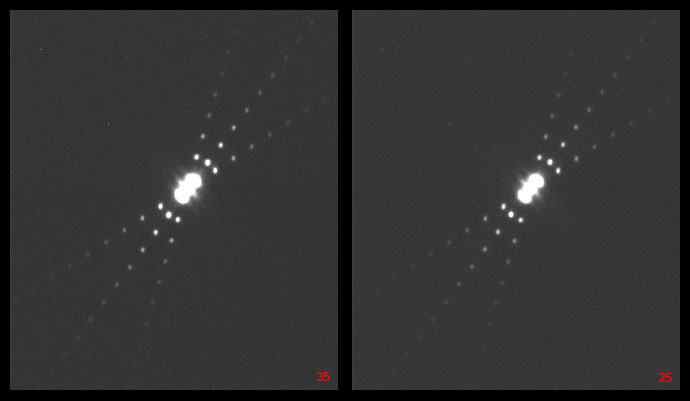 |
SEPTEMBER 15th, 2013The Brown Brown Dust of Home Its difficult to image the dust clouds of the Milky Way from my location. The obligatory light pollution filters knock out most of the brown hues but I have this time been able to recover at least some of them. It was tight to fit in all 3 objects at the same time and the open cluster NGC7209 has ended up right on the left hand edge. The NGC description for IC5146 refers to an irregular cluster of 9.5 mag stars involved in bright and dark nebula - so it includes both the cluster and nebula. The nebula itself is also known as Sh2-125. The Cocoon nebula is both a reflection and emission type with its own dust lanes and is located at the end of the dark streamer B168 - 3 nebulae for the price of one! The complex is classed as a molecular cloud with a young star cluster embedded within it. The cluster is dominated by the central star BD+463474, a B0V type, which excites the symmetrical H-II nebula (Sharpless 125). In the model proposed by Roger & Irwin (1982), the Cocoon’s ionised gas (H-II) has broken through the surrounding dark cloud (B168) while the bulk of nebular remains behind BD+463474, obscuring background stars. H-alpha emission-line stars were discovered in the Cocoon by Herbig (1960). Forte et al. (1984) estimated the stellar population to be around 110 stars most of them were probably contracting objects with an age 1 to 3 million years and spectral class K. However, Lada et al. (1999) using infrared images were able to penetrate much deeper into the nebula and were able to find five times as many heavily obscured proto-stars - ref: Observing the Caldwell Objects - David Ratledge, 2000. Image details: |
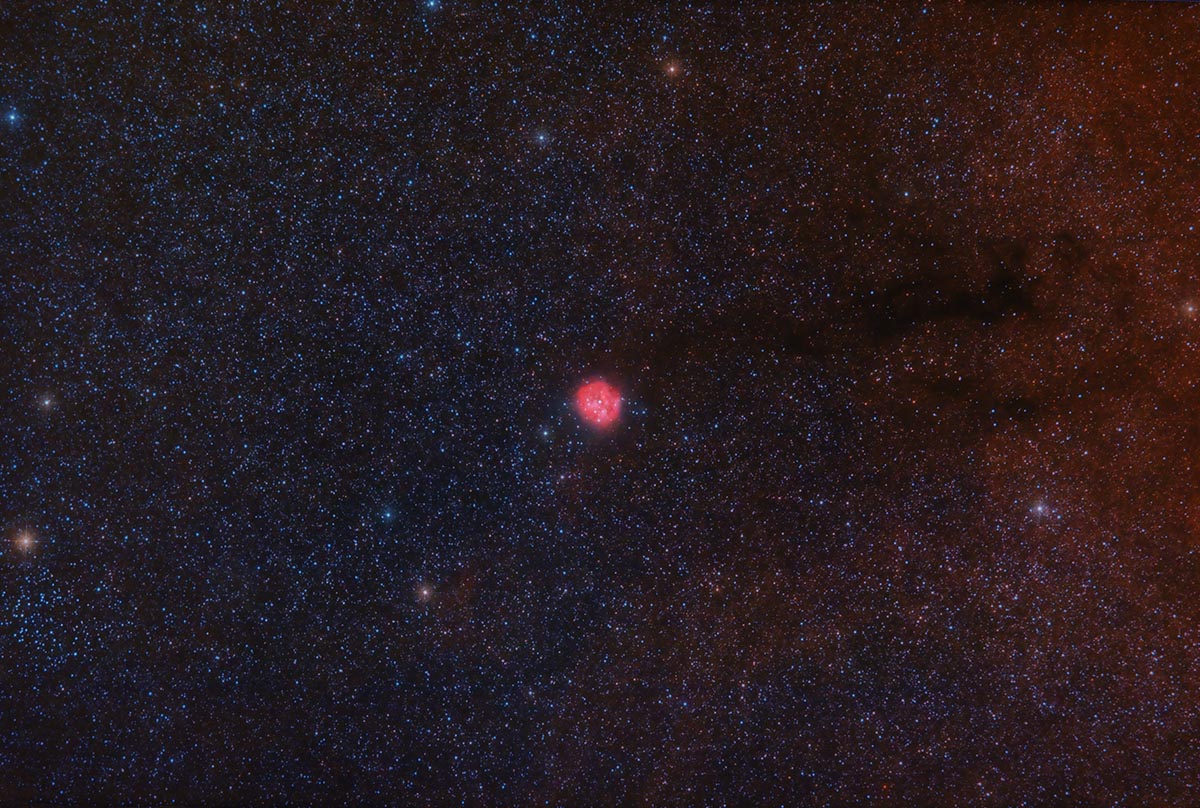 |
Cocoon Nebula |
SEPTEMBER 8th, 2013North American (NGC7000) and Pelican Nebulae (IC5070) A poor run of cloudy weather meant choosing a brightish object to image between clouds. The North America Nebula (left) and the Pelican Nebula (right) are in fact parts of the same interstellar cloud of ionised hydrogen (H II region). They are divided by a dense dark molecular cloud L935. The puzzle has been to find the star responsible for ionising the nebula. It is certainly not the nearby Deneb and various other candidates have been suggested. However, the issue was resolved in 2004/5 by Comeron & Pasquali when they found behind the dark nebula, near the very centre of the H II region, a heavily obscured O type star with matching spectral type. The star they identified has a mass of 60x the Sun. The nebula was discovered by William Herschel on 24th October 1786 from Slough, England. Image details: |
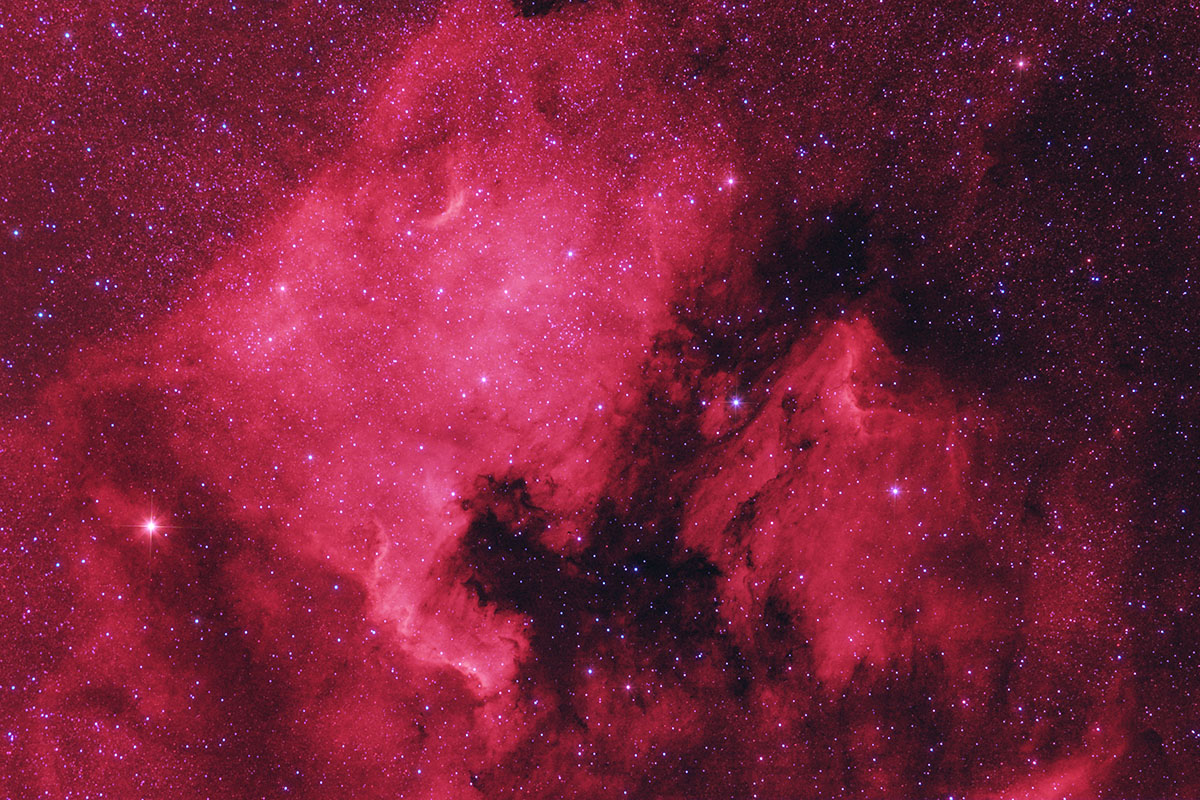 |
North American and Pelican Nebulae |
SEPTEMBER 1st, 2013Wild Duck Cluster, M11 My first image of the autumn and as it was a poor hazy night I settled on a relatively easy object. The cluster's popular name was coined by Admiral WH Smyth who, in the 19th century, thought it resembled "a flight of wild ducks". The description occurs in what became known as the Bedford Catalogue (his observatory was in Bedford). The Bedford Catalogue comprised his observations during the 1830's of about 1000 deep-sky objects and was published in 1844 becoming one of the earliest deep-sky catalogues. He located the Wild Duck Cluster in the defunct constellation Actinous whereas today it is in Scutum. It was his entry number 664 so it could be called B664. This open cluster would be visually one the best in the sky if it were not so low down for us in northern England. It is one of the richest and most compact of the open clusters perhaps containing up to 3000 stars. It's age is around 220 million years. Several dark nebula surround M11.
|
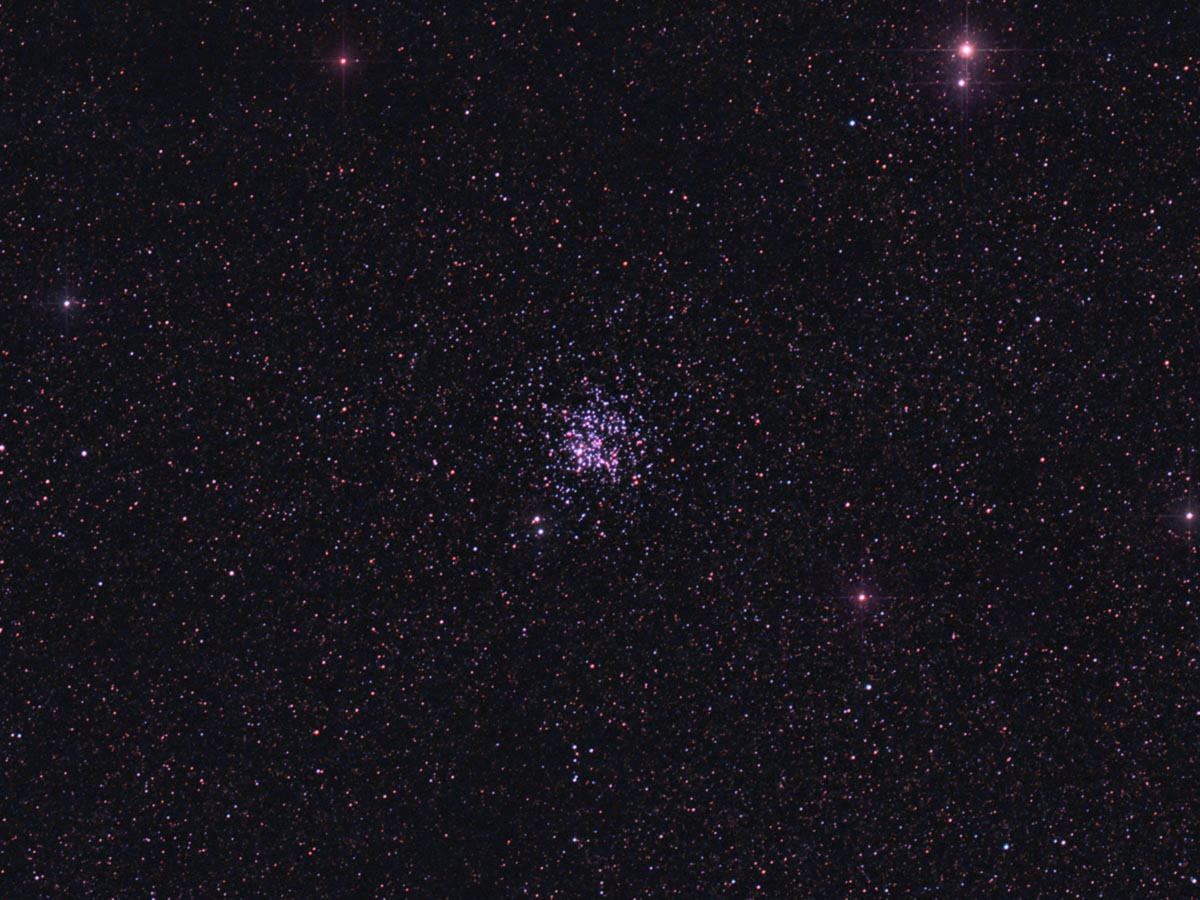 |
M11 |
AUGUST 15th, 2013Milky Way through Scutum & Serpens It's taken 4 years for me to find a way to remove the light pollution from this shot. I eventually did it by removing it from each frame individually (using a mask) before finally stacking. Trying it after stacking just didn't work. The moral - never give up! The prominent blue cluster 3 quarters across and about 1/5th down (near Beta Ophiuchi) is IC4665. The lowest Nebula visible is M8, the Lagoon Nebula. Altair is near the top at the left (east).
|
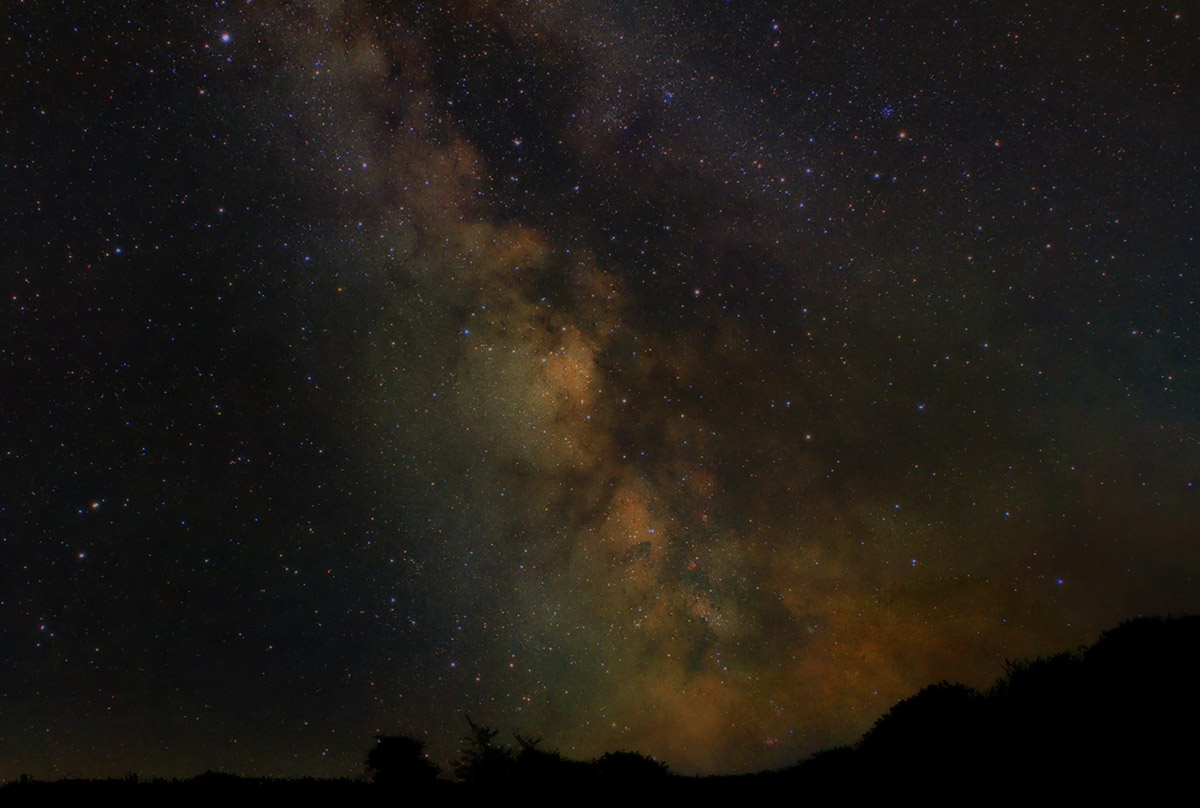 |
Scutum-Serpens |
JULY 14th, 2013Zwicky's Necklace, 8 Zw 388 My last image of spring 2013 and one that I struggled with due to poor seeing so I couldn't really get enough signal to do it justice. There are one or two published images around but I wanted a colour one. Thanks are due to Wolfgang Steinicke for drawing attention to this object in his book "Galaxien" published by Oculum-Verlag (2012) ISBN 978-3-938469-56-9. This book is highly recommended even though it is in German and despite getting my name wrong! Zwicky's Necklace is number 288 in Zwicky's 8th Catalogue of Compact Galaxies. Zwicky was a colourful character and is credited with first deducing the presence of dark matter way back in 1933. The anecdote that amuses me most about him is his opinion of colleague astronomers whom he referred to as "spherical bastards" - whichever way he looked at them they were still bastards! Despite this object being known for over 40 years virtually no data is available for it. It comprises 10 to 12 galaxies arranged in an usual shape with magnitudes from 18 and fainter. Its distance is unknown but on the basis of its brightness it must be of the order of 1 billion light years distant - my guess! Image details:
|
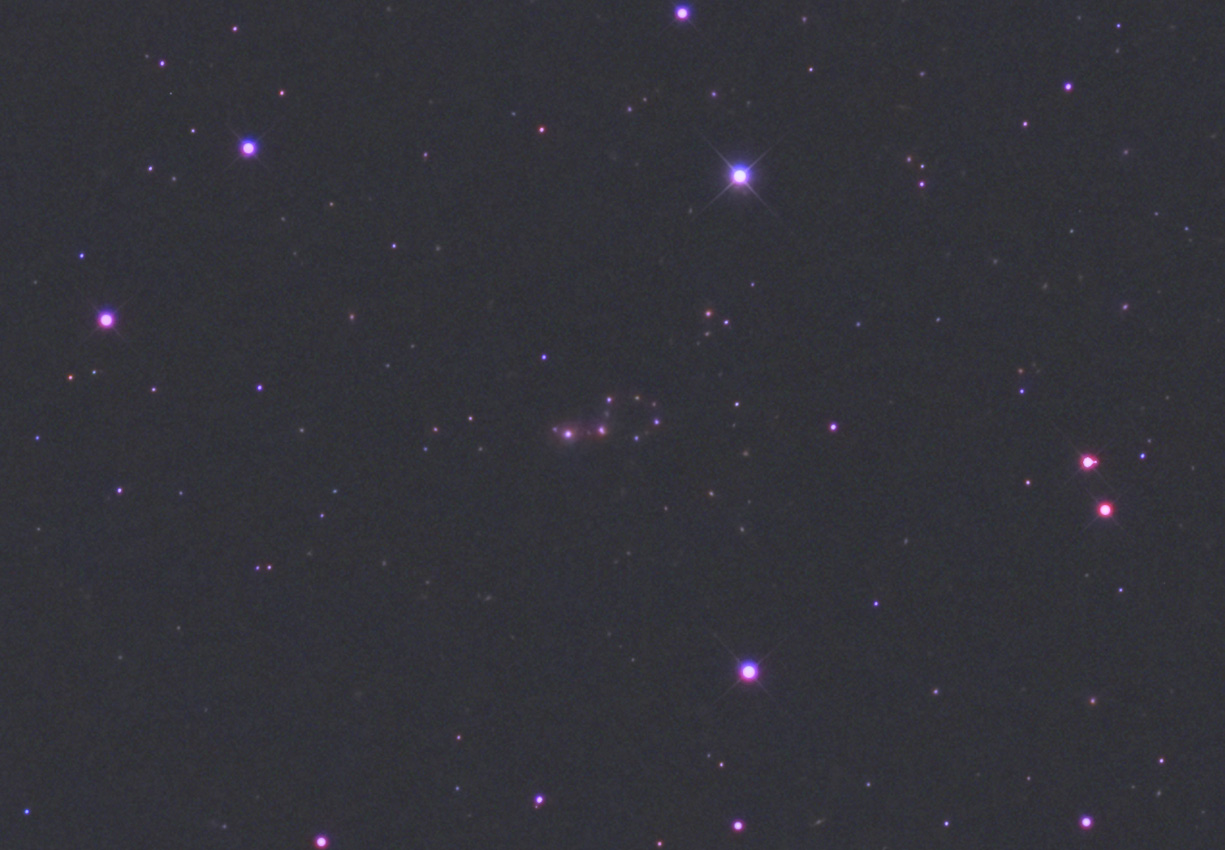 |
Zwicky's Necklace |
JUNE 28th, 2013Ultra Compact Dwarf, SUCD1
Background Ultra-compact dwarf galaxies (UCD) are a recent discovery and are very compact objects with very high stellar population counts. They are currently one of the hottest topics in professional research. They are thought to be in the order of 200 light years across yet with up to a hundred million stars. UCDs were discovered initially in the Fornax Cluster by Hilker (1999) and Drinkwater (2000) but have subsequently been found in other clusters including the Virgo Cluster. It was originally theorized that these are the cores of dwarf elliptical galaxies that have been stripped of gas and outlying stars by tidal interactions during their path through the hearts of rich clusters. However, evidence began to emerge that these objects shared many similarities to globular clusters - only that they were much bigger and brighter. The debate still rumbles on but the mega-globular cluster interpretation seems to winning the argument. So they are are probably not galaxies but the biggest of all star clusters- plus note their acronym does not include the word galaxy! SUCD1 It was probably the discovery of an UCD associated with M104 by Hau et al. (2009) that started to tip the balance in favour of the mega star cluster scenario. The HST image they used is shown inset in mine. This was by far the nearest UCD known and so could be studied in much more detail - they named it SUCD1. They found a size of around 100 light years and mass of around 33 million Suns. Their results also showed no need for a dark matter presence which is normal for star clusters but not for dwarf galaxies, which tend to be dark matter dominated. Their detail findings supported the massive globular cluster model.
Image details:
|
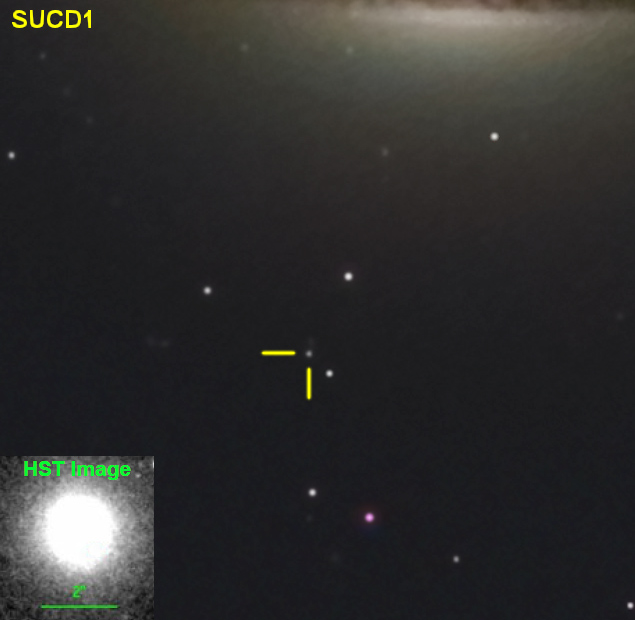 |
JUNE 23rd, 2013Sombrero Galaxy, M104 Really this object is far too low for imaging from Lancashire but it is such an interesting galaxy I just had to have a go. Because its centre is so bright and normally over-exposed, I used a combination of 5 minute and 15 minute exposures to achieve the necessary high dynamic range. Despite being obviously a spiral galaxy with a very prominent dust lane tilted just 6 degrees from exactly edge-on, M104 does share some features with elliptical galaxies. Namely it has a huge central halo, an active galactic nucleus with a supermassive black hole of around 1 billion solar masses and a large retinue of globular clusters (2000). It is classed as LINER (low ionization nuclear emission region) galaxy. Its distance is around 30 million light years and seems to located somewhat on its own rather than part of a group. All in all - a very untypical spiral galaxy and the presence of an UCD see above) only added to its uniqueness. Image details:
|
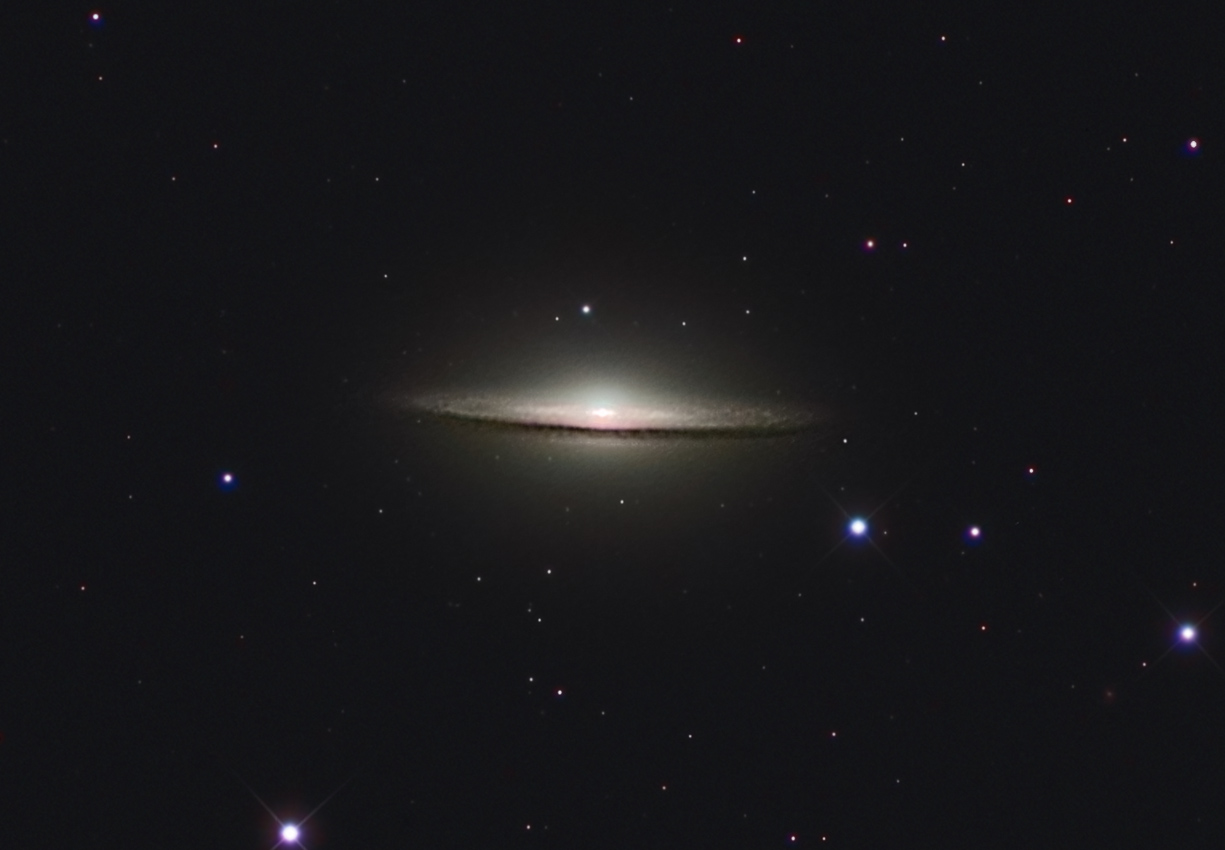 |
Sombrero Galaxy, M104 |
JUNE 8th, 2013The Jet from M87 (Virgo A) Observations of M87’s jet go back to 1918 (Heber Curtis, Lick). Over the years there have been many suggestions as to its source. Halton Arp even suggested it aligned with M84 and M86 which he postulated had been ejected from M87. However, today we know that the jet is powered by a rapidly spinning accretion disk around M87’s supermassive black hole. This black hole is currently thought to be around 6.3 solar masses and is the third largest known. Recent research by Doeleman et al. (October 2012) explains it well “Approximately 10% of active galactic nuclei exhibit relativistic jets, which are powered by accretion of matter onto super massive black holes.” They also detected the jets “launch point” as at “5.5 +/- 0.4 Schwarzschild radii (which) is significantly smaller than the innermost edge of a retrograde accretion disk, suggesting that the M87 jet is powered by an accretion disk in a prograde orbit around a spinning black hole.” Hubble measured the speed of the jet and found that it exhibited superluminal velocity - around 4 to 5 times that of the speed of light. This is a line of sight effect due to the jet approaching us at close to the speed of light. So the jet doesn’t after all point towards M84 and M86 - it's more towards us than sideways. There will be a counter-jet but as it is travelling substantially away from us it is virtually invisible. The jet is easily revealed by subtracting a model of a smooth elliptical galaxy from the real one. I used a blurred image for this. This technique also reveals many faint fuzzies around M87 which are some of its globular clusters. Image details:
|
 |
M87's Jet |
JUNE 2nd, 2013A Trillion Suns - otherwise known as M87 (Virgo A) This featureless looking elliptical galaxy is in fact the dominant and central galaxy of the Virgo Cluster. It is a supergiant in every respect:
On this image I have concentrated on the galaxy and its neighbours. The next plan is to re- process the raw image so as to reveal the jet. Image details:
|
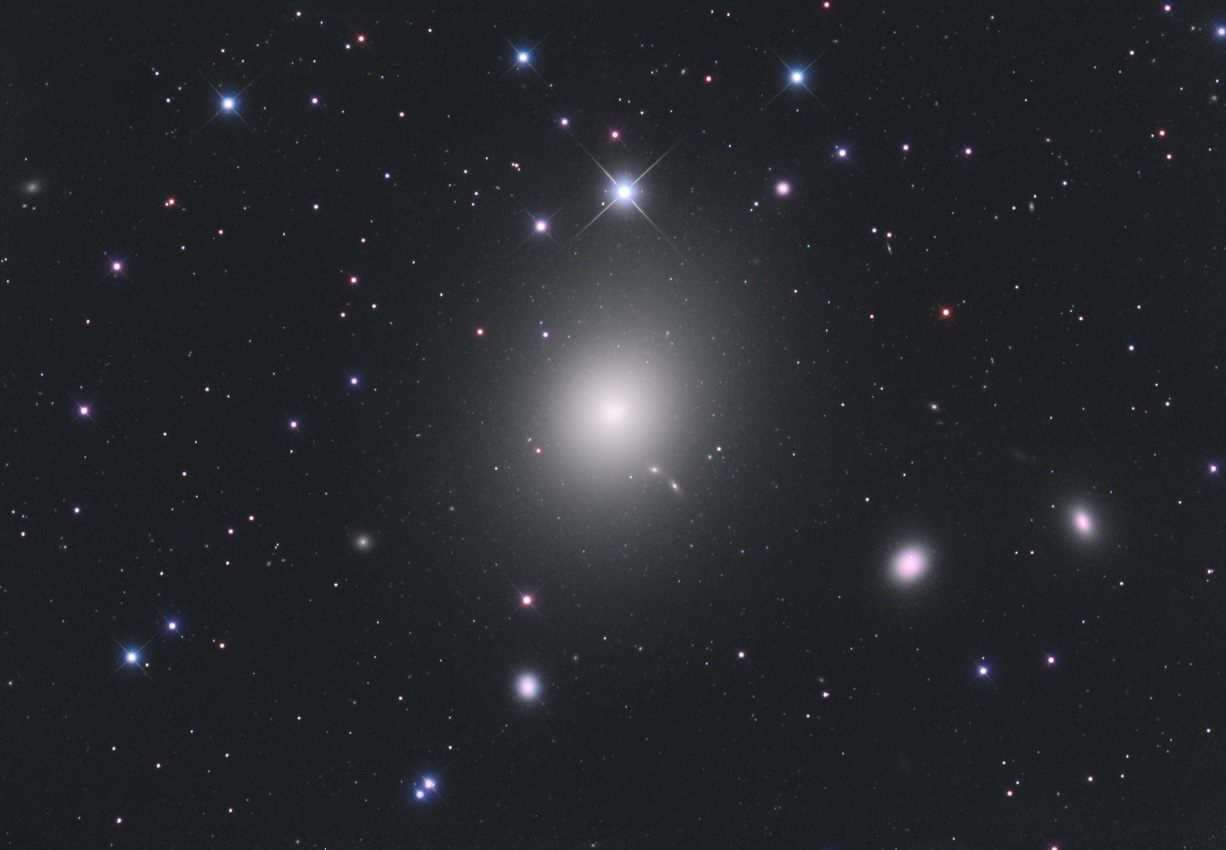 |
M87 |
|
||||
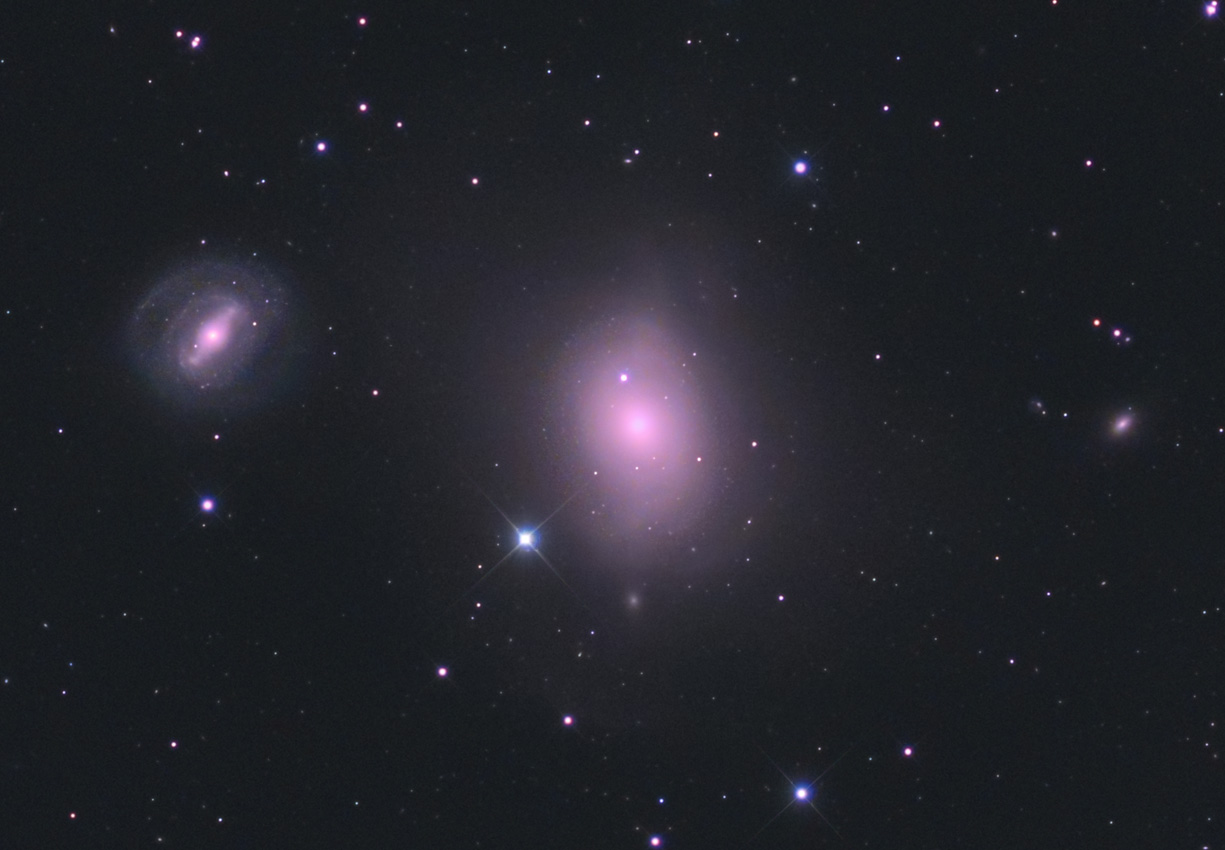 |
||||
M85 and NGC 4394 |
MAY 19th, 2013Virgo Cluster Mosaic The Virgo Cluster comprises up to 2000 member galaxies and forms the heart of the even larger Virgo Supercluster, of which our Local Group is just an outlying member. With the Eyes and the M84/M6 mosaic already taken I only needed the bottom left corner to complete a 4 panel mosaic. I was able to shoot the missing piece on the 27th April. It only contained one galaxy of note, the insignificant NGC4425 but it was a poor night so nothing to lose really. The Observatory is shut now for the summer - it doesn't get dark properly again here until August. Still a few more images to process though. Image details:
|
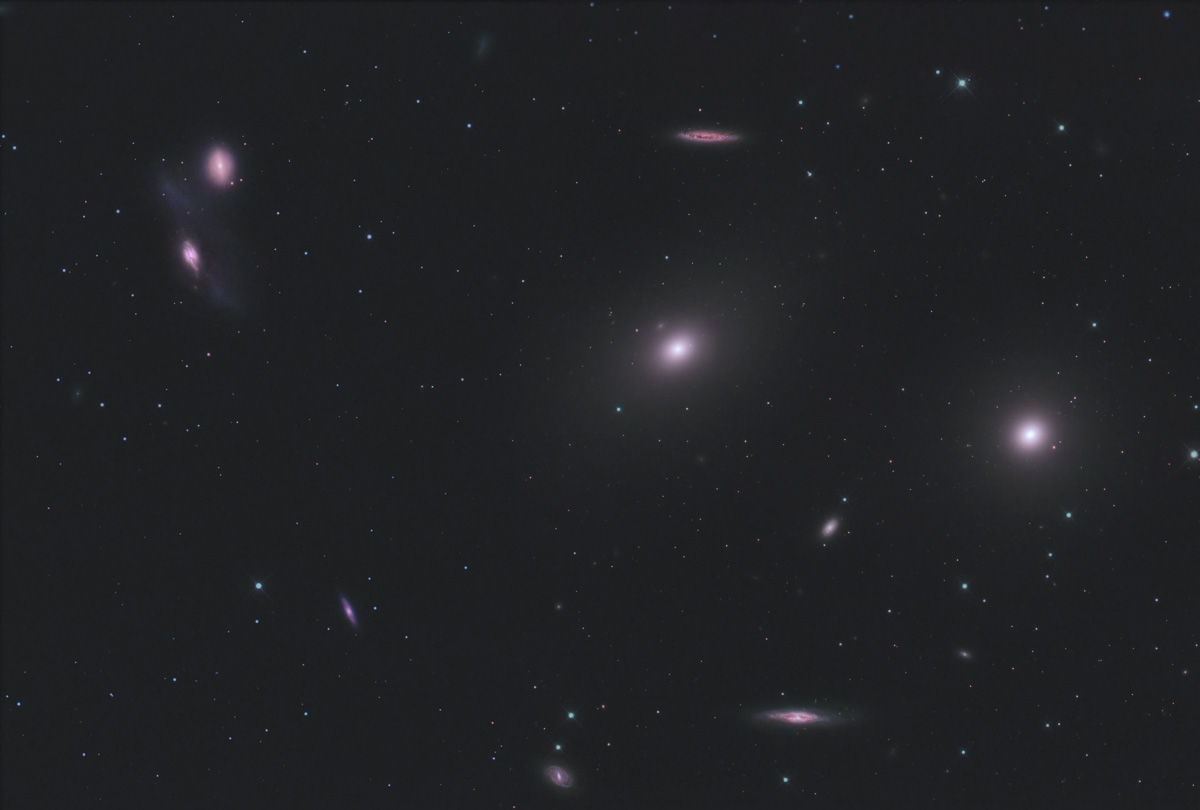 |
M84 M86 |
MAY 12th, 2013Galaxies M84 & M86 - Virgo Cluster This pair of giant elliptical galaxies are probably not quite as close together as they look. Although both are part of the large Virgo Cluster, M86 (left) is part of its own sub-group (including NGC 4438 - see below). It has a large velocity relative to other members of the main group and is falling towards the centre from the far side. This fall is so fast that is has a blue shift (ie approaching us). M84 (right) is part of the sub-group dominated by M87. A third sub-group surounds M49. Hubble images of the nucleus of M84 have revealed jets powered by a central black hole. The edge-on spiral galaxy towrds the top is NGC 4402. It is suffering "ram-pressure stripping" as it falls through the intra-cluster medium. There's a great Hubble image of this galaxy. The edge-on spiral towards the botton is NGC 4388 and is probably suffering a similar fate. It is classed as a Seyfert 2 type galaxy and there is also an excellent image available - this time taken with the 8 metre Subura telescope. A two panel mosaic was required to fit these large galaxies and their neighbours all in. Ten minute sub-exposures were used to prevent the galaxy cores over-exposing. Image details:
|
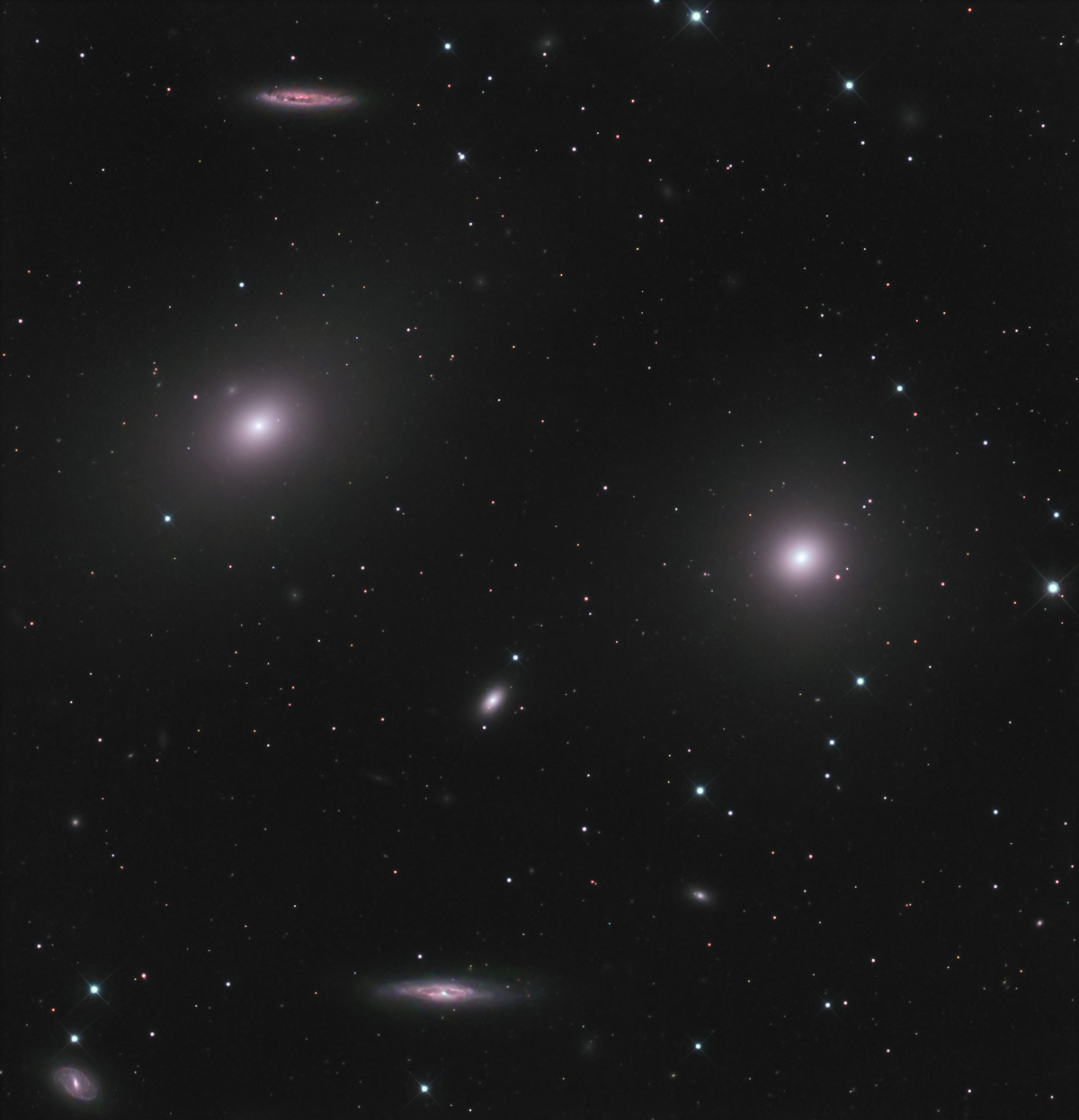 |
M84 M86 |
MAY 8th, 2013The Eyes, Galaxies NGC 4435 & 4438 The Eyes is the popular name given to this pair of galaxies close to the centre of the Virgo Galaxy Cluster, 50 million light years distant. NGC 4438 is the larger galaxy and is thought to have been originally a spiral galaxy which has been highly distorted by a close encounter with another galaxy. In contrast, the second smaller galaxy, NGC 4435 is a barred lenticular galaxy which appears remarkably undisturbed. So rather than these two galaxies interacting it is more likely that the giant elliptical galaxy M86 (out of shot) is the culprit in distorting NGC 4438. Recent observations have found filaments of hydrogen gas connecting NGC 4435 to M86, highly suggestive of a collision in the past. Image details:
|
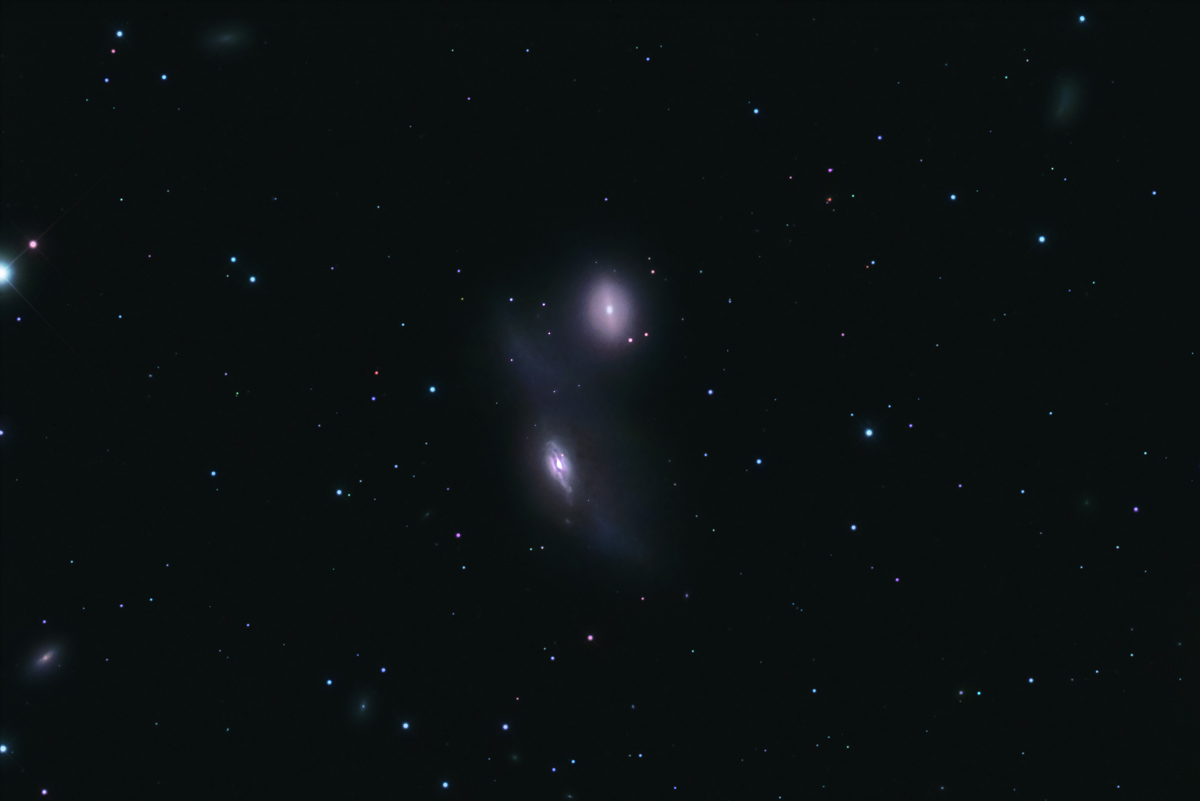 |
The Eyes |
APRIL 28th, 2013Galaxy Cluster Abell 1495 A bit confusing as Abell produced a catalogue of Galaxy Clusters as well as Planetary Nebulae. This time it's from his "Catalog of rich clusters of galaxies". This image is taken from the top-left (north-east) corner of the full frame of my image of the Box (Hickson 61). It serendipitously included Abell 1495 so it always pays to check what else has been captured in an image. Abell counted 123 galaxies from magnitude 17 down to magnitude 19. My image goes a bit deeper - probably around magnitude 21 - and consequently reveals even more, around 200 galaxies, despite not including all of it. Most of the galaxies are, of course, just faint smudges at its huge distance of 1.8 billion light years. The bright star is SAO 82192 and is magnitude 9.44. Image details:
|
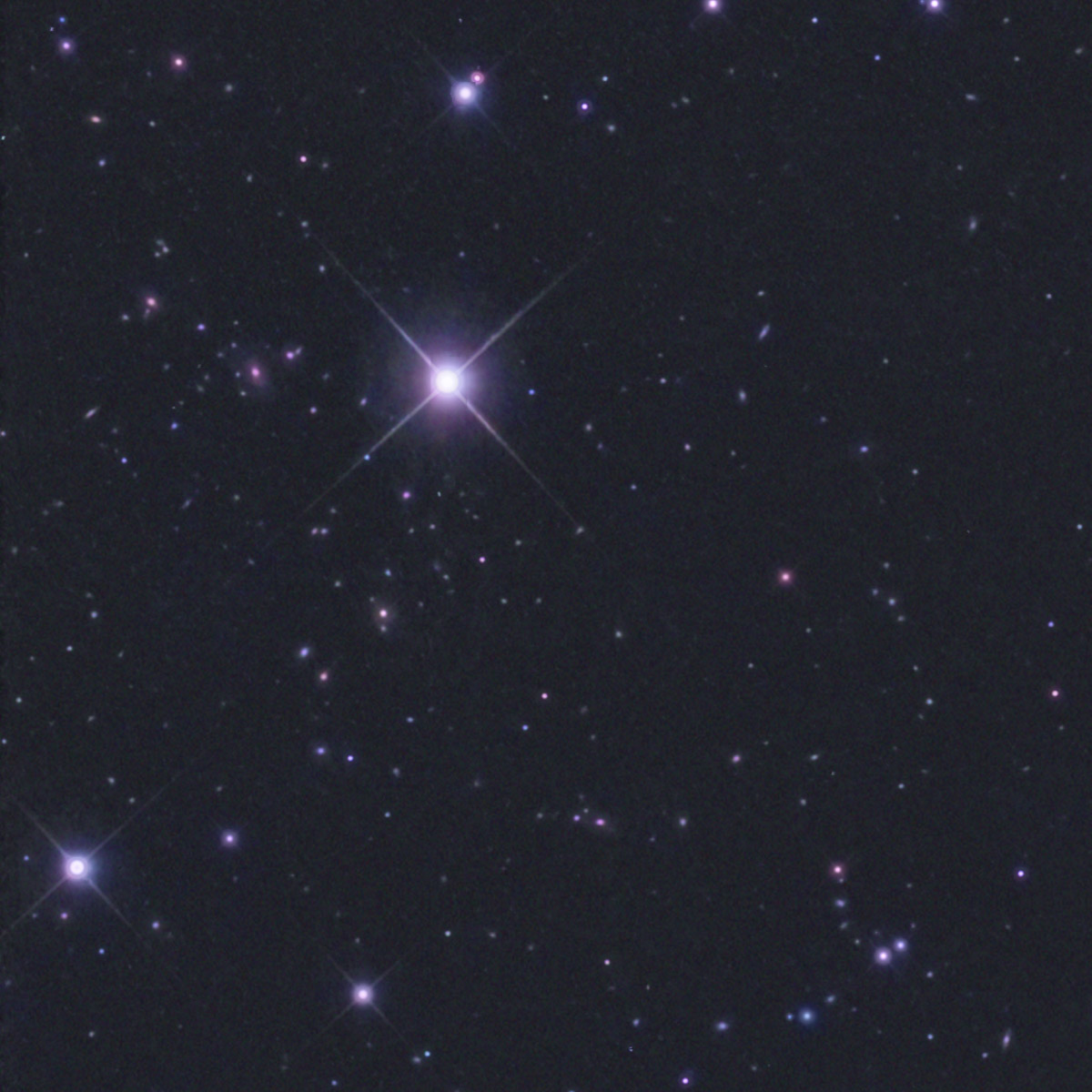 |
Abell 1495 |
APRIL 14th, 2013Dwarf Spherical Galaxy Leo II (Harrington-Wilson No2) Despite its insignificant appearance this is one of the most studied of dwarf galaxies. Why? Well Leo II is the second most distant dSph galaxy assumed to be orbiting the Milky Way (MW) and should therefore be in pristine condition, unaffected by interactions/encounters with our galaxy. Recent research by several groups have confirmed this e.g. “we conclude that this dSph is rather an isolated Local Group satellite that is falling into the MW regions and passing its (dark) halo for the first time (e.g., Chapman et al. 2007; Majewski et al. 2007.)” - LÉPINE et al. 2011. So probably not a satellite after all. It's distance is around 700,000 light-years. Perhaps the best image of this object was taken 8.2 metre Subaru Telescope (Komiyama et al 2007). They detected over 80,000 stars down to magnitude 26. Koch et al (2007) estimated “the mass-to-light for Leo II to lie in the range 25 to 50. This is, in conjunction with the flatness of the dispersion profile, is striking evidence that Leo II is a dark matter dominated system”. Never going to be a showpiece object, I was pleased to be able to record it fairly clearly. I would estimate the stars in Leo II in my image to be around magnitude 19 to 21. They are also reasonably well resolved as the star density in this galaxy is very low. Image details: |
LeoII |
MARCH 30th, 2013Comet Panstarrs (C/2011 L4) over Blackpool Tower
|
||
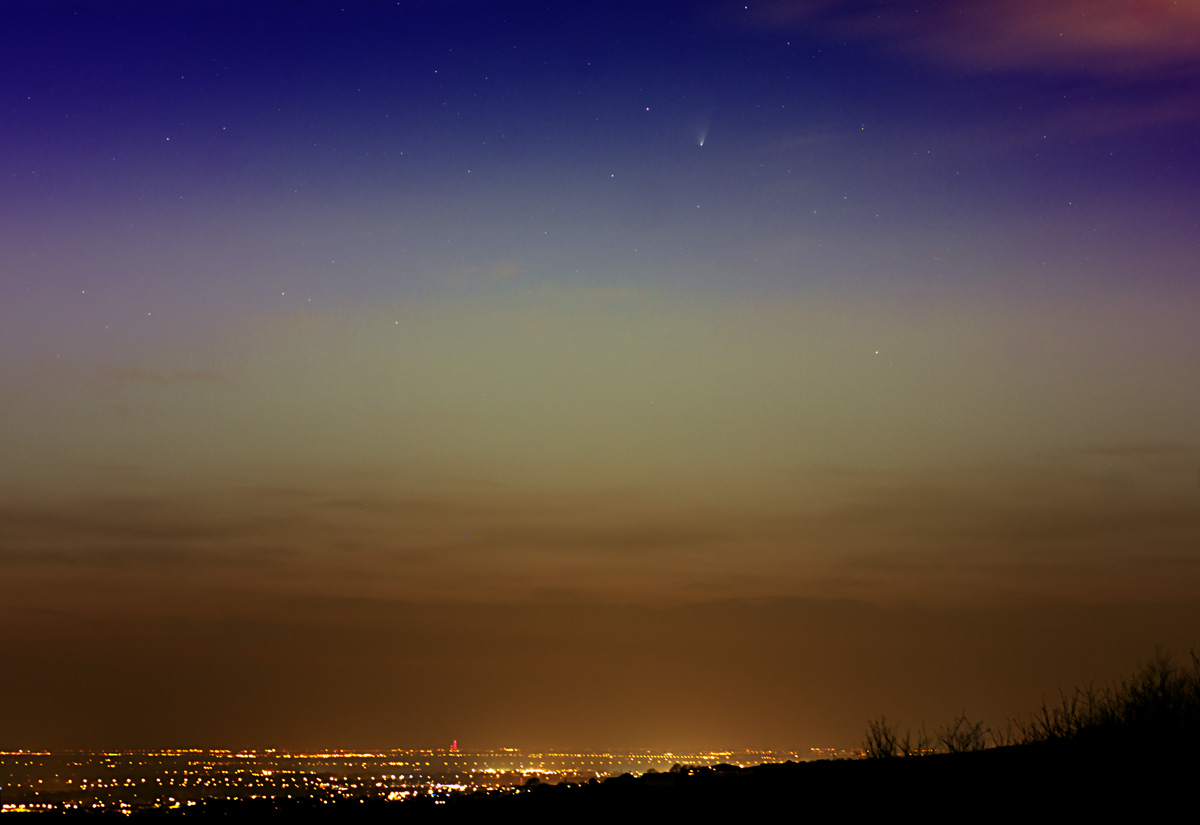 |
||
Comet Panstarrs with Blackpool Tower on the horizon. |
MARCH 24th, 2013Gemini with the Bolton Astronomical Society Canon 300D Just when you think the weather cannot possibly get worse it does. March has been clouded out apart from a few gaps here and there. I recently acquired for our society a modded Canon 300D at a very reasonable price. It has had the deep-red blocking filter replaced making it very sensitive to the important H-alpha nebula emission line. This was the first test I managed with it - just enough time to show that it performs well. If you compare this to the image of Akira Fujii then it becomes obvious that the camera's H-alpha perfomance exceeds that of the camera used by this well-known astro-photographer. The bright (red) nebula Sh2-252 has recorded more prominently and even the smaller Jellyfish Nebula is obvious (between the two yellow/red stars). This gives an indication of the superb H-alpha sensitivity of this modded camera. The camera is for loaning out to members contemplating making a start in imaging.
|
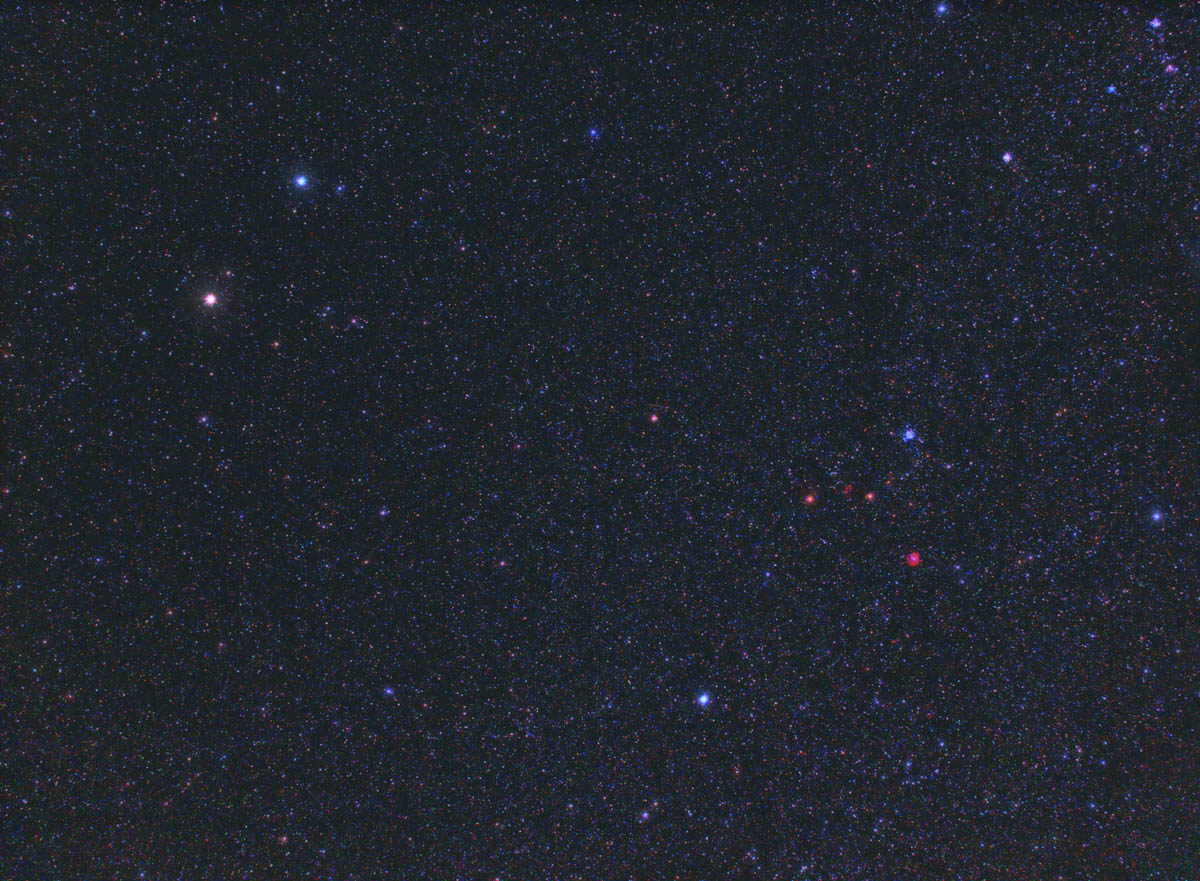 |
Gemini |
MARCH 17th, 2013Planetary Nebula Abell 24 (PK 217+14.1 ) I had long needed a deep-sky object in Canis Minor but it is not renowned for any spectacular objects. However, Abell 24 looked promising and turned out to be surprisingly bright given it is almost totally ignored. Very little information available on this object but I did find a paper by C.T. Hua and S. Kwok (Astron. Astrophys. Suppl. Ser. 138, 275-297 (1999)). The following is an (edited) extract from their paper. The H-alpha and [N II] images of Abell24 show two strong elongated E-W lobes with a fragment of (W-side) arc which could be part of a helical structure. The [N II] image, noticeably larger, displays a double shell with remarkable radial structures outwards. These jet-like structures are similar to those observed in the [N II] image of NGC 6543 (HST archives, program 5403, P. Harrington, P.I.). The patchy lane in the north shows up even more sharply. The two bright lobes could be the "waist" of a bipolar PN, with the underlying emission being the projection of two bubbles on top and below the waist. The jet-like radial structures, not apparent in wide bandpass images of Manchado et al. (1996, p. 125), are clearly seen in the NE and SW directions. Note regarding the prominent [N II} emission referred to by Hua & Kwok: the bandpass of most H-alpha filters (including mine) includes as well the close-by [N II] emission. Only filters with an extremely narrow bandpass can discriminate these two different emissions. Strictly normal H-alpha filters should be described as H-alpha + [N II}. This is one object that would benefit from 3nm Ha and 3nm NII filters perhaps revealing those "jet-like structures" - but at nearly £1000 each I'll pass this time! Image details: |
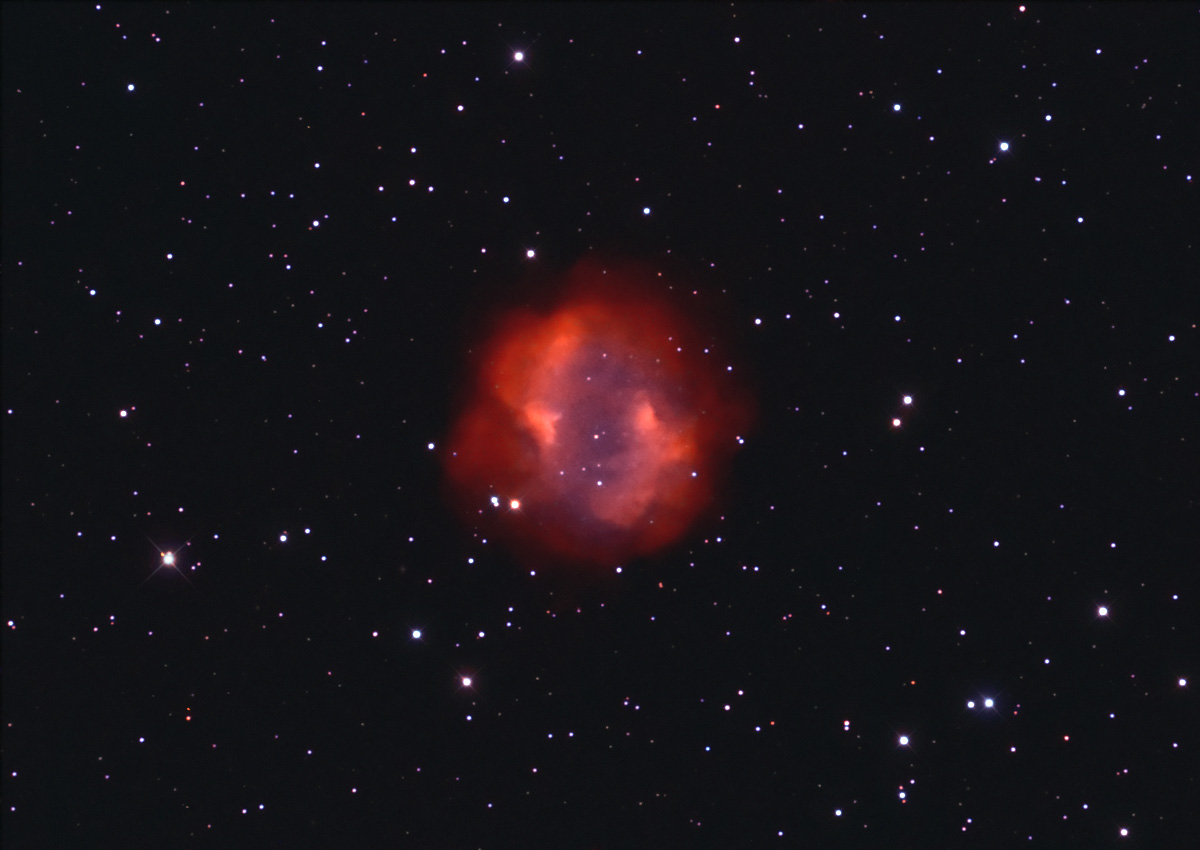 |
Abell 24 |
MARCH 10th, 2013Christmas Tree Cluster, Cone Nebula and VdB 78 Pushing my luck shooting under strong moonlight but with so few clear nights this winter I took a chance. This is the last of the sequence of images with the 300mm lens and it is now back inside until next winter. Several objects of note in this widefield view. The Christmas Tree Cluster is left of centre and surrounded by (bluish) reflection nebula. Below this is the Cone Nebula NGC 2264. The cone's shape comes from a dark absorption nebula of cold molecular hydrogen and dust in front of the bright emission nebula. The faint but rich cluster just below centre is Trumpler 5 (Collinder 105). This open cluster is extremely old at 3 billion years. To the right is blue reflection nebula Van den Bergh 78. Trickiest of all to spot is Hubble's Variable Nebula NGC 2261. Looking a bit like a tiny comet, it is located near to the bottom about a third the way in from the left. Image details: |
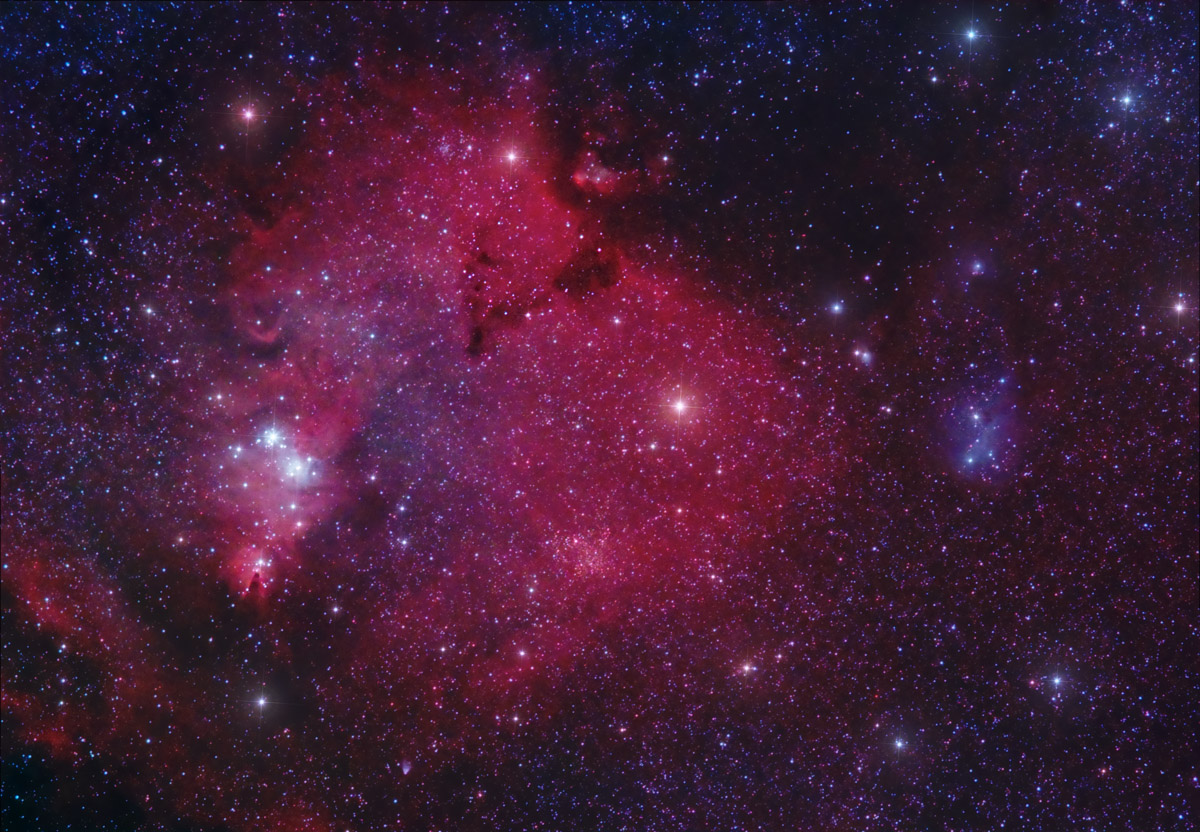 |
Area around the Christmas Tree Cluster |
MARCH 3rd, 2013Rosette Nebula (Nebula: NGC2237-9; Cluster: NGC2244) Weather as normal meaning 3 separate nights needed to get a decent signal of this popular object. I shot the nebula off-centre in order to record the faint east (left) and north (top) extensions. The Rosette Nebula (Caldwell 49) is a large cloud of dust and gas with the open cluster NGC 2244 (Caldwell 50) at its centre. This young cluster has formed from the nebula and has created the central cavity. Radiation and stellar winds from the hot young stars within the cluster have blown the remaining material outwards. UV radiation from the hottest stars causes the nebula to shine. Research by Schneider et al. (1998) supported this scenario. Located in Monoceros. Image details: |
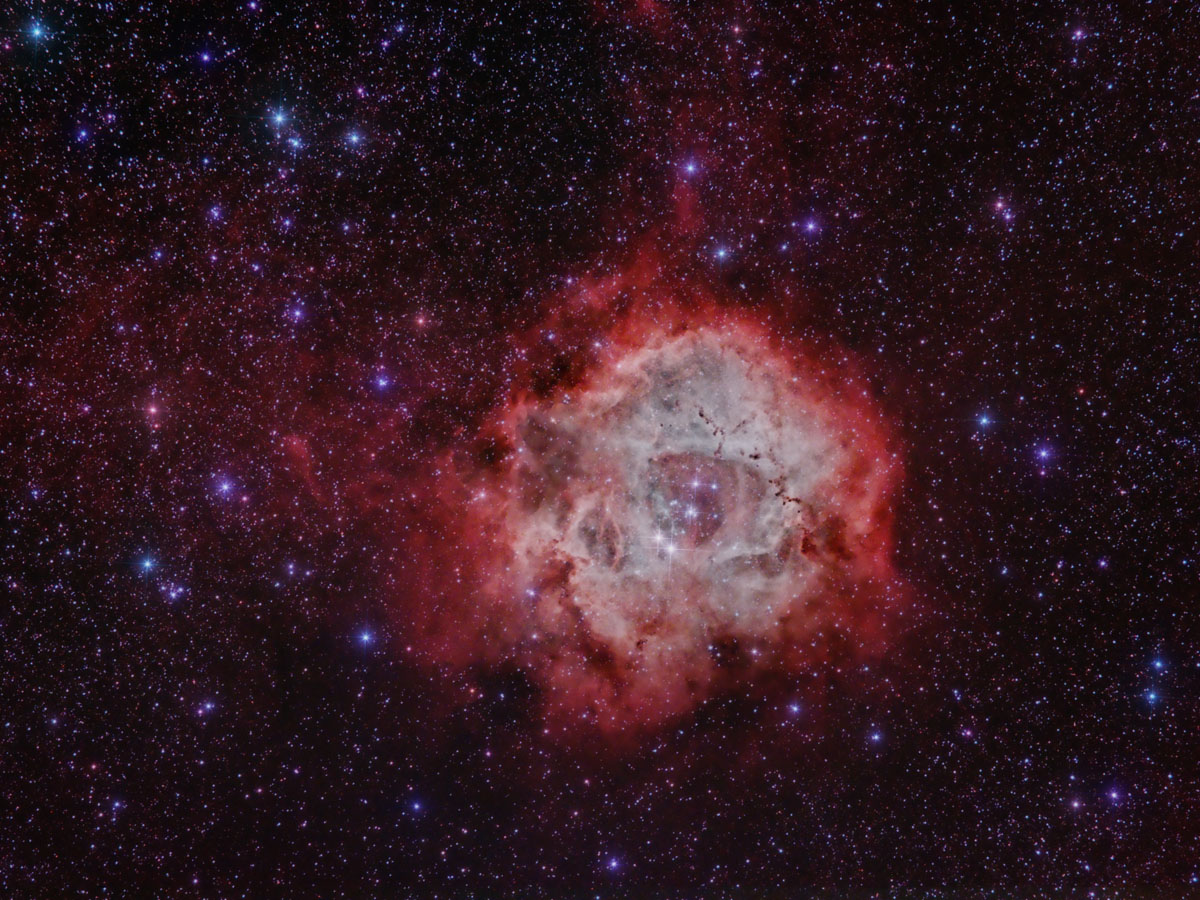 |
Rosette Nebula |
FEBRUARY 17th, 2013IC405, 410 & 417 (Sh2-229, -236, -234) Our shocking weather continues and it took no less than 4 separate nights to get barely enough signal for this group of objects. We simply don't seem to get cloud free nights any more. A group of disparate nebulae at different distances and different origins. The Flaming Star Nebula (right) is a foreground object surrounding and illuminated by the variable star AE Aurigae. This star has a very high proper motion and is classed as a runaway star having been ejected from the Orion region. IC410 on the other hand (lower left of centre) is a background emission nebula illuminated by the open cluster NGC 1893. The third fainter nebula (upper left) is also in the background and is known as the Spider. Image details: |
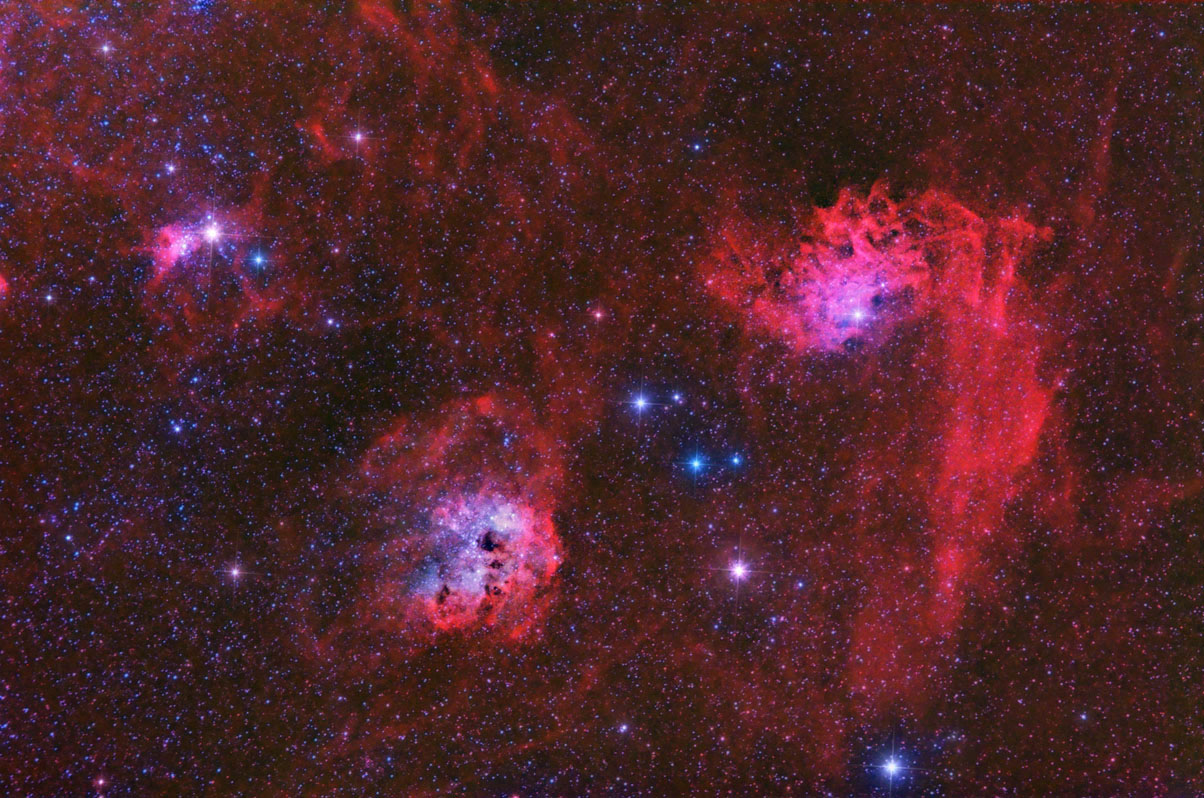 |
IC405, 410 and 417 |
FEBRUARY 3rd, 2013Californian Nebula, NGC 1499 A return to a familiar target but this time using the Pentax 300mm lens. The plan was for 4 hours of exposure - 2 hours before the meridian and 2 hours after - but the last hour's worth was too light polluted to be used - a mist had rolled in. I find a meridian flip worth the effort as it averages out the fixed pattern noise of the 40D - the camera is upside down for the second sequence of images. Discovered by E. E. Barnard in 1884, this bright emission nebula in Perseus is easy to image but the outer reaches require long exposures. The star most likely to be ionising the nebula is the bright, hot & blue Xi Persei (below middle & right a bit) Image details: |
NGC 1499 |
JANUARY 27th, 2013Barred Spiral Galaxy NGC 1530 In Camelopardalis is possibly the most spectacular barred spiral in the northern hemisphere. Despite being around 120 million light years away much detail is visible which gives a clue that this is an intrinsically large galaxy. NGC 1530 has a prominent bar with two wide open spiral arms originating from its ends. There is a lot going on in this galaxy and its most unusual feature is a bright mini-spiral ("nuclear spiral") at its core and orientated roughly perpendicularly to the bar (see inset). One of the most researched galaxies with several papers devoted to it and particularly focusing on gas inflow into the bar and nuclear region. Image details: |
NGC 1530 |
JANUARY 20th, 2013Asterism: Klingon Battlecruiser It's bad news if you see one of these coming towards you! In reality it is open cluster NGC 1662 but it does bear an uncanny resemblance to a Klingon Battlecruiser of Star Trek fame. Russell Sipe (Sky&Telescope, February 2005) was first to spot that the stars fitted the running lights of the battlecruiser (D7 Class). Not to be confused with a Romulan Warbird! NGC 1662 is a young open cluster situated in the direction of the galactic anticenter and relatively distant from the galactic plane. This large distance from the plane may seem surprising for such a young cluster and suggests that the formation mechanism could have been the collision of a high velocity cloud with the gas of the galactic plane. (Ref: Dias at al., Astronomy & Astrophysics 2000). Image details: |
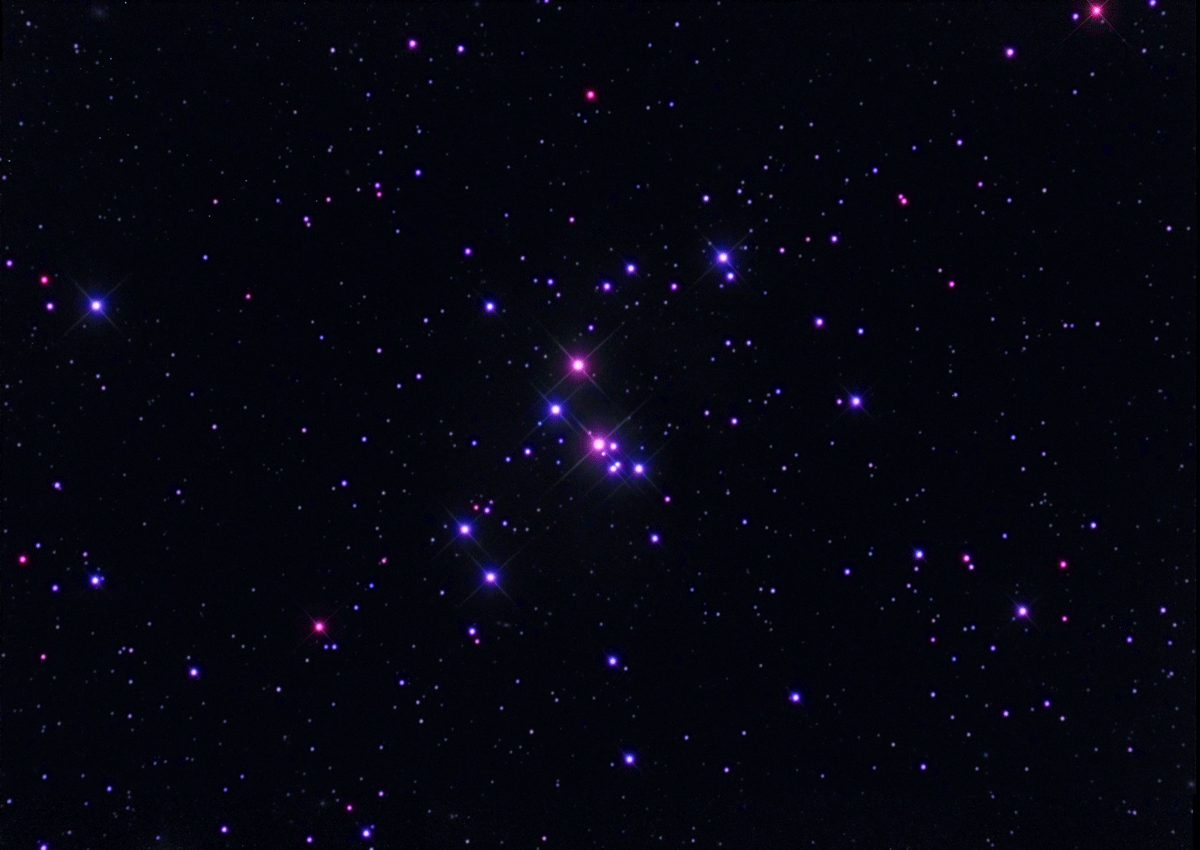 |
NGC 1662 |
JANUARY 13th, 2013Galaxies NGC 678, 680, 691, 694 & IC167
|
||
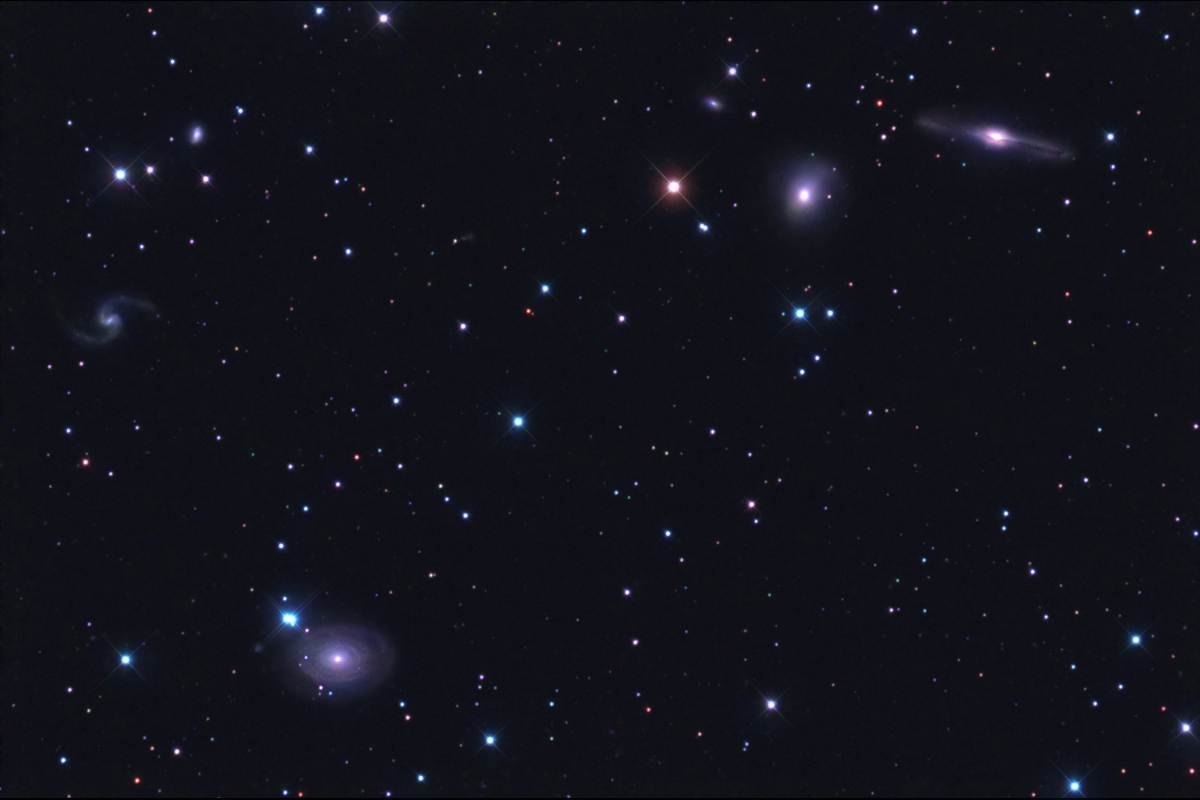 |
||
NGC 678, 680, 691, 694 & IC167 |
JANUARY 10th, 2013Galaxies NGC672 & IC1727 (VV338) Interesting pair of galaxies located in Triangulum that support the evidence for dark matter (see later). They are of uncertain distance but certainly dwarf and relatively local (<32 Mly). The NGC 672/IC 1727 group consists of six members: the NGC 672/ IC 1727 galaxy pair (VV338 pair) and four more nearby dwarf Irregular galaxies. NGC 672 was classified Sc+ (Holmberg 1958) and later as SBc (de Vaucouleurs et al. 1976). IC 1727 was classified by the same authors as IrrI and SBm. Recent research by Zitrin & Bosch (2008) studied a string of galaxies comprising NGC 672/IC 1727 group, the NGC 784 group and several other galaxies in the same vicinity with similar redshifts. They proposed that the observational evidence argued in favour of interpreting the galaxies as being located along a dark matter filament that is itself located in a low-galaxy-density region and is accreting intergalactic cold gas focused by the filament. Image details: |
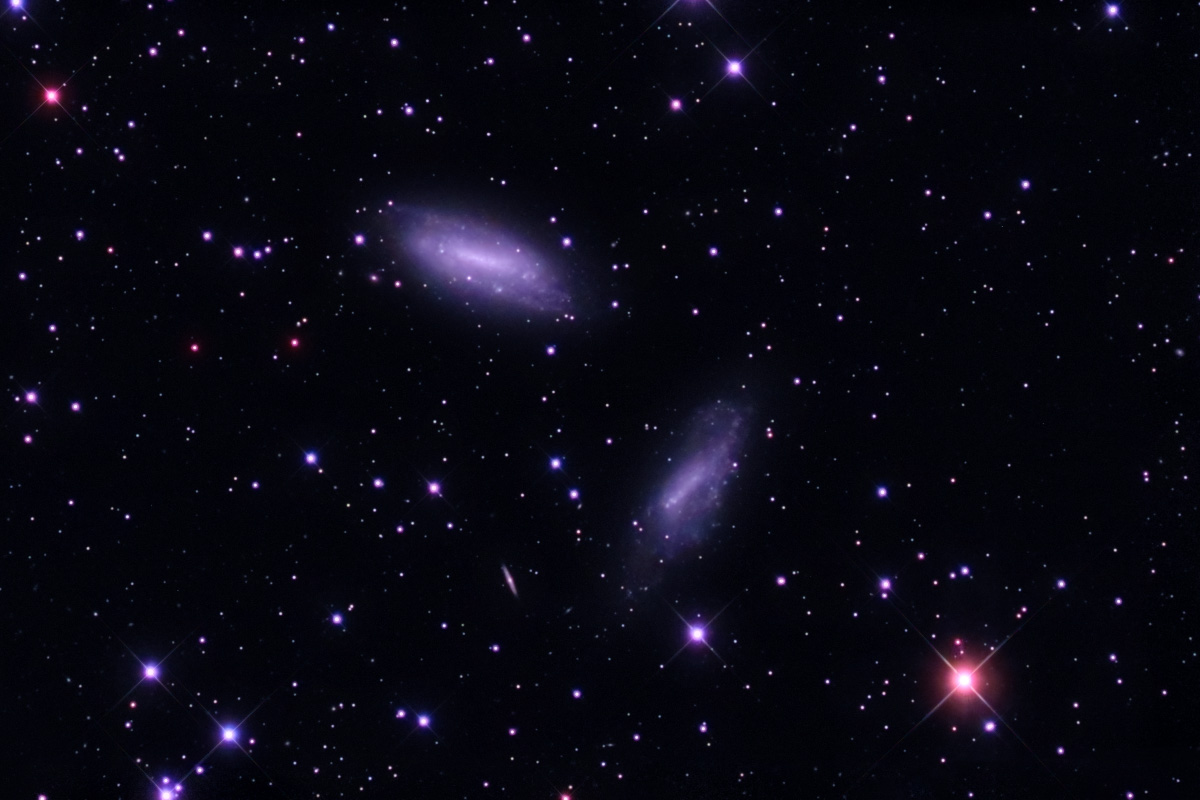 |
NGC 672 and IC1727 |
JANUARY 6th, 2013Asterism: David's D OK not its real name, that's Collinder 21, but when I came across this grouping I thought it good enough to deserve a name! It does look a bit like a capital "D". Following research by Sandro Villanova et al., this group was found (on the basis of proper motions and radial velocities) not to be the remnant of an open cluster but a chance alignment of brightish stars. You don't actually need 4.5 hours to image this object - it just so happened I was imaging nearby galaxies with the RCOS which do need that long.
|
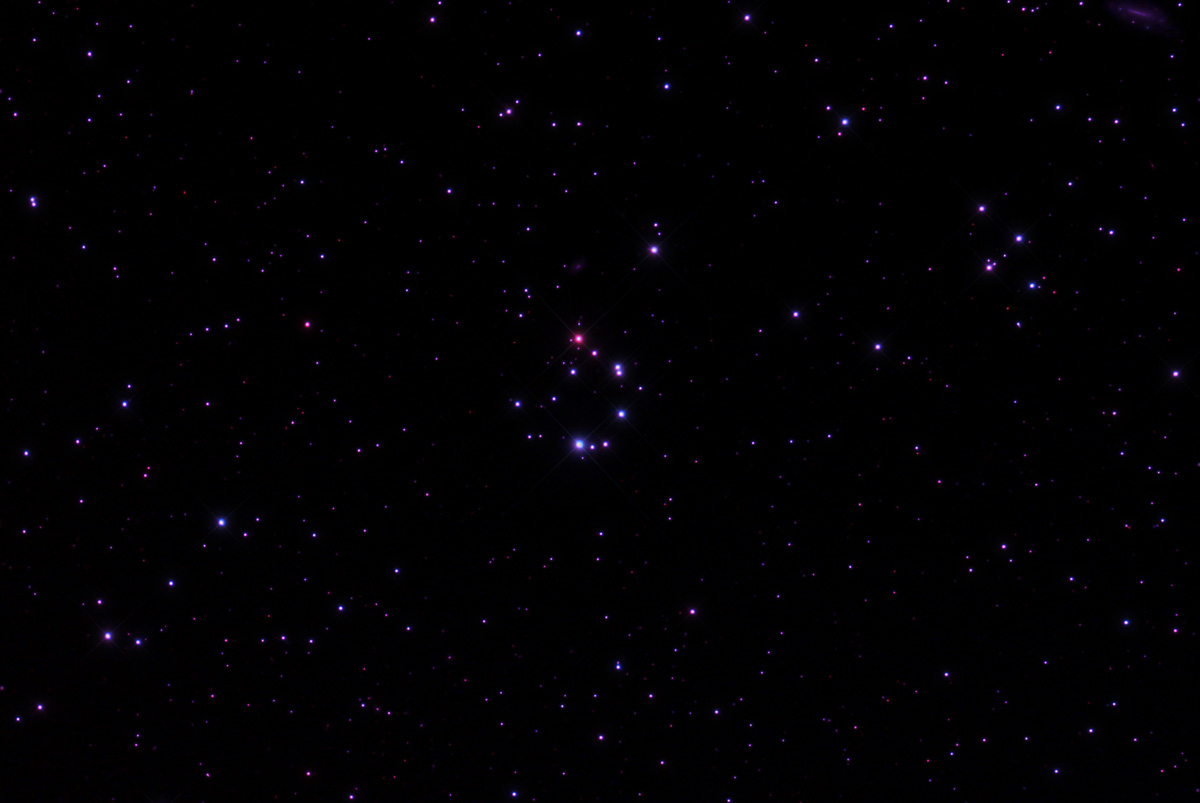 |
Collinder 21 |
JANUARY 1st, 2013Edge-on Galaxy NGC 891 Around 30 million light-years away in the constellation Andromeda, this dramatic edge-on spiral galaxy looks very much like our own Milky Way. It has a flat thin galactic disk and a central bulge divided down the middle by a prominent dark dust lane. Remarkably obvious at this distance are filaments of dust that extend hundreds of light-years above and below the center line. This dust is thought to have been blown out of the disk by supernova explosions and/or intense star formation activity. Image details: |
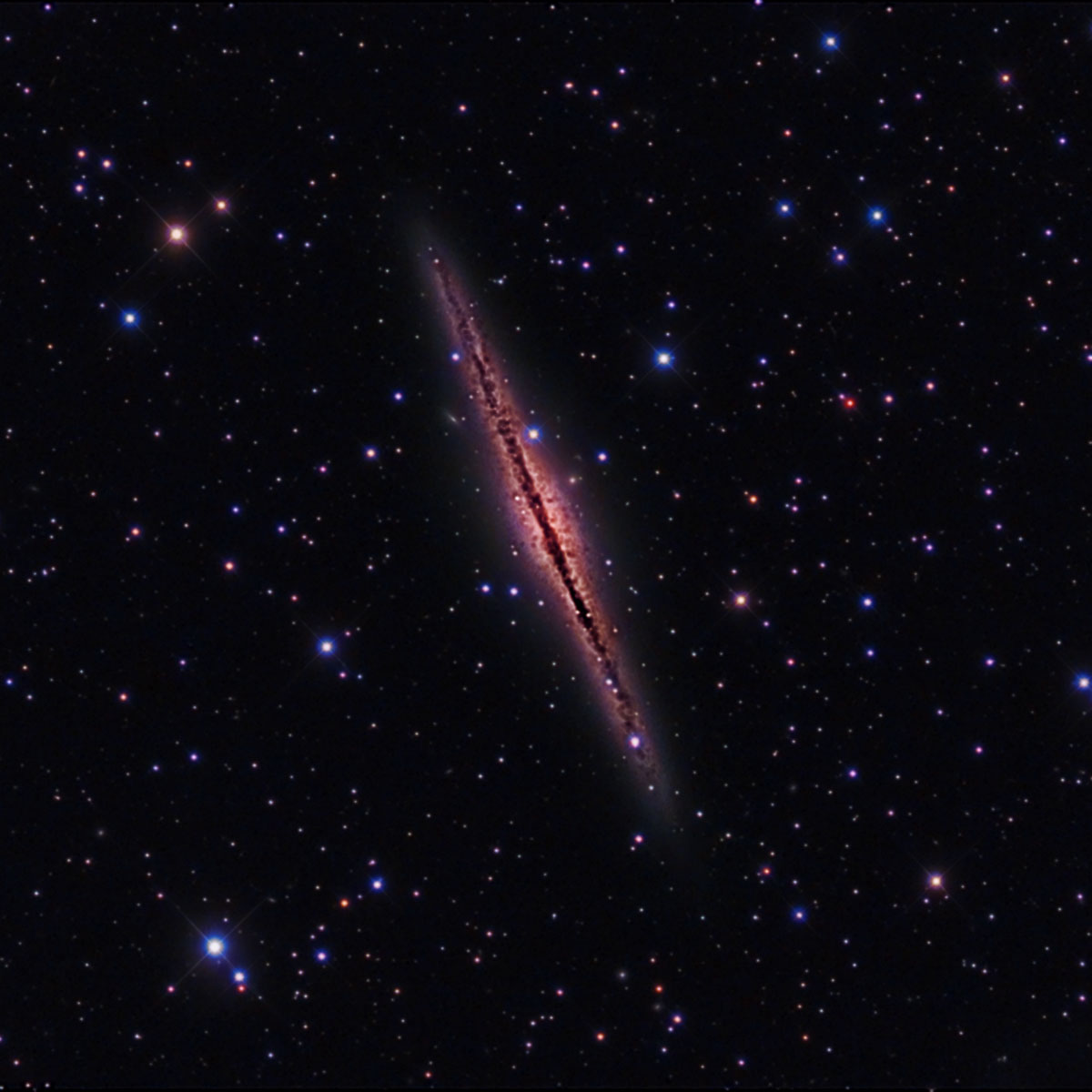 |
NGC 891
|
|
To continue with the imageBLOG for 2012 Click Here
Recommended full colour book covering all aspects of digital imaging: "Digital Astrophotography - The State of the Art" edited by David Ratledge Order Online |
Please remember these images are copyright David Ratledge. Contact me before any use is made of them.
